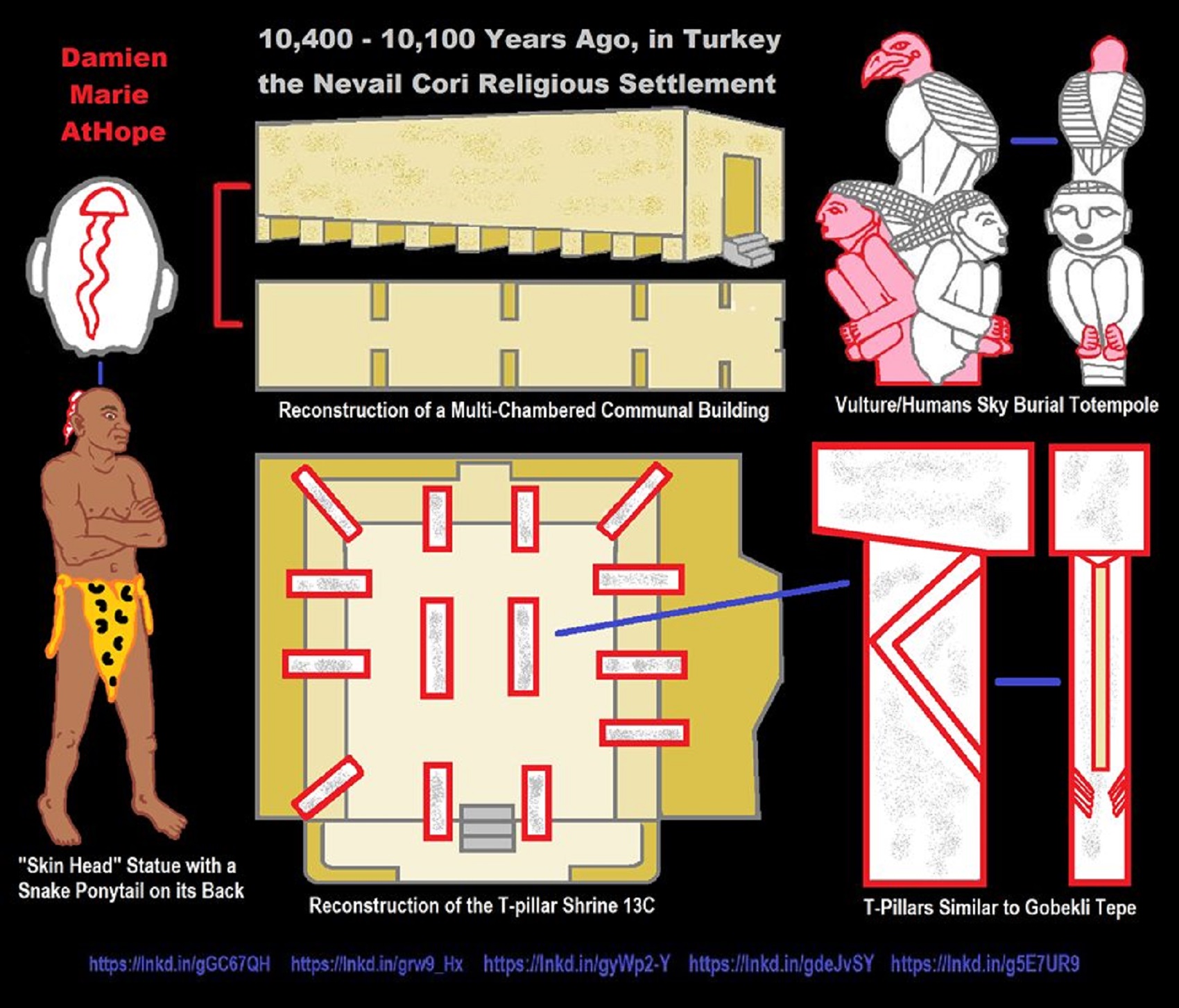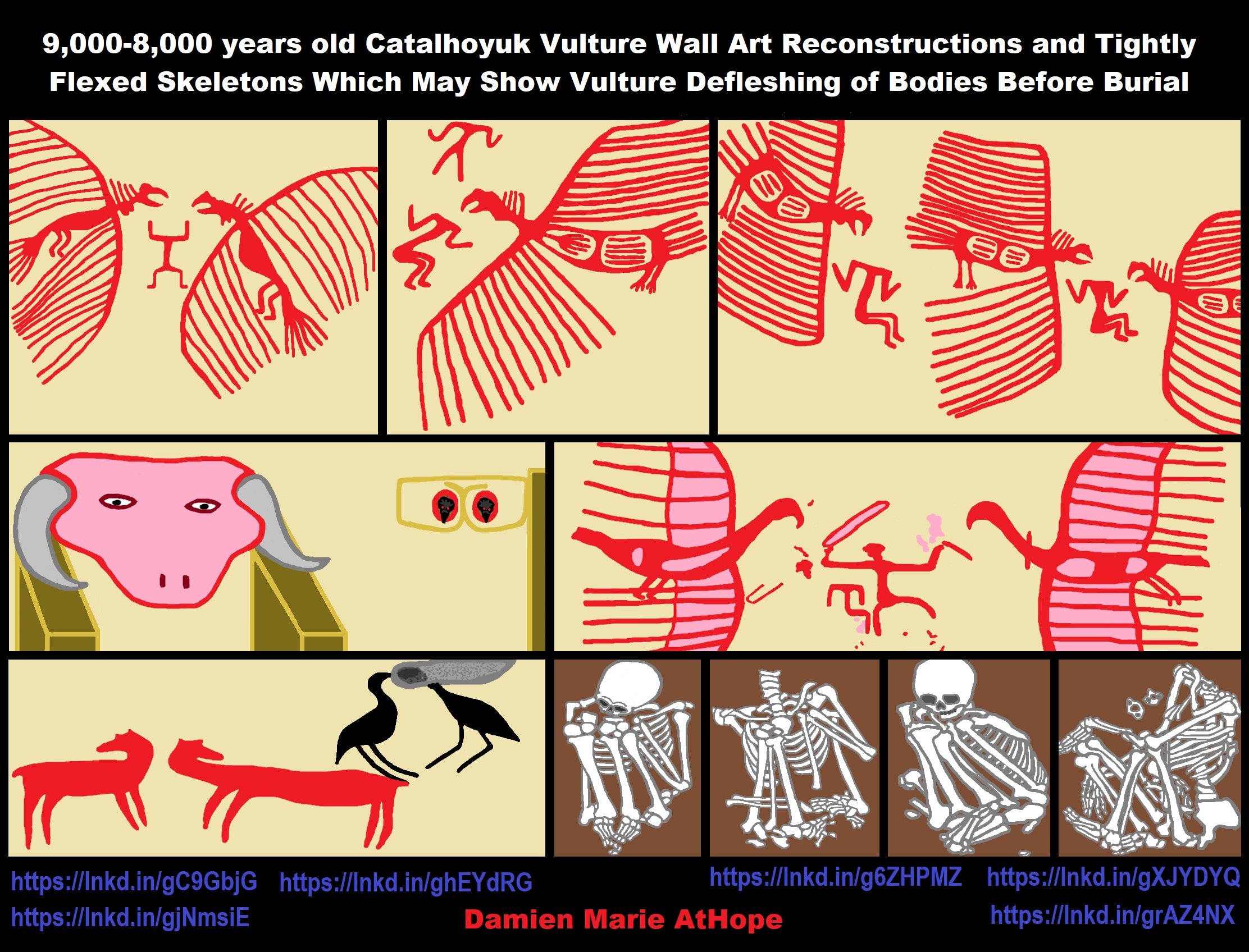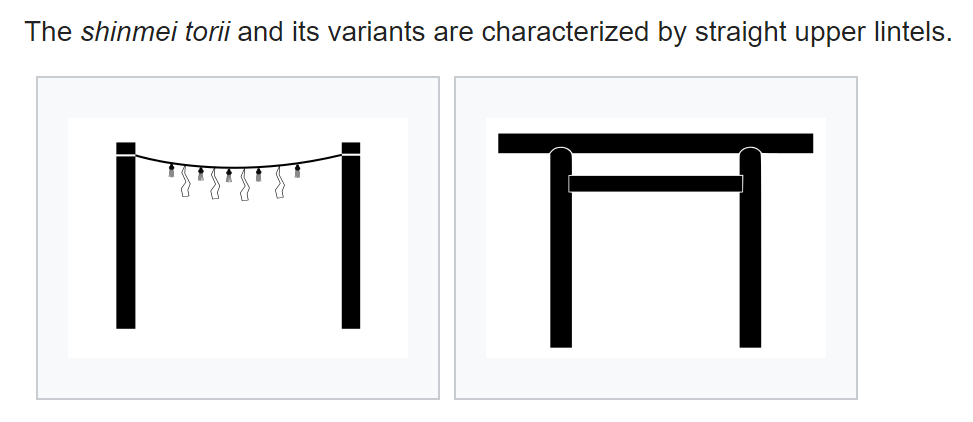ref, ref, ref, ref, ref, ref, ref, ref
“In archaeology and anthropology, the term excarnation (also known as defleshing) refers to the practice of removing the flesh and organs of the dead before burial, leaving only the bones. Excarnation may be precipitated through natural means, involving leaving a body exposed for animals to scavenge, or it may be purposefully undertaken by butchering the corpse by hand. Practices making use of natural processes for excarnation are the Tibetan sky burial, Comanche platform burials, and traditional Zoroastrian funerals (see Tower of Silence). Some Native American groups in the southeastern portion of North America practiced deliberate excarnation in protohistoric times. Archaeologists believe that in this practice, people typically left the body exposed on a woven litter or altar.” ref
Ancient Headless Corpses Were Defleshed By Griffon Vultures
Sky burial ( Animal Worship mixed with Ancestor Worship) is a funeral practice where a human corpse is placed on a mountaintop, elevated ground, tree, or constructed perch to decompose while be eaten by scavenging animals, especially birds. This Animal Worship (or Zoolatry) rituals may go back to the Neanderthals who seem to Sacralize birds starting around 130,000 years ago in Croatia with eagle talon jewelry and oldest confirmed burial. Or possible (Aurignacian) “Bird Worship” at Hohle Fels cave, Germany, early totemism and small bird figurine at around 33,000 years old, which had been cited as evidence of shamanism.
As well as possible ‘Bird Worship’ (in the Pavlovian culture/Gravettian culture) part of Early Shamanism at Dolní Věstonice (Czech Republic) from around 31,000-25,000 years ago, which held the “first shaman burial.” The shamanistic Mal’ta–Buret’ culture of Siberia, dating to 24,000-15,000 years ago, who connect to the indigenous peoples of the Americas show Bird Worship. The Magdalenian cultures in western Europe, dating from around 17,000-12,000 years ago have a famous artistic mural with a bird that I think could relate to reincarnation and at least bird symbolism. Likewise, there is evidence of possible ‘Bird Worship’ at Göbekli Tepe (Turkey), dated to around 13,000/11,600-9,370 Years ago with “first human-made temple” and at Çatalhöyük (Turkey), dated to around 9,500-7,700 Years ago with “first religious designed city” both with seeming ancestor, animal, and possible goddess worship.
The Tibetan sky-burials appear to have evolved from ancient practices of defleshing corpses as discovered in archeological finds in the region. These practices most likely came out of practical considerations, but they could also be related to more ceremonial practices similar to the suspected sky burial evidence found at Göbekli Tepe (11,500 years ago) and Stonehenge (4,500 years ago). ref
“Sky Burial” and its possible origins at least 12,000 years ago to likely 30,000 years ago or older.
*Around 33,000 years ago Hohles Fels Site (Germany):
There is evidence of possible ‘Bird Worship’ at Hohles Fels cave Site, such as a small bird figurine around 33,000 years old is one of three carvings important as well as relatable to later times, which had been cited as evidence of shamanism, the belief that spirits can be influenced by priests known as shamans. A female fertility figurine ( pre-goddess Venus of Hohle Fels), a bird in addition to bird-bone flute— from a griffon vulture wing dated to around 35,000 years ago as well as around 40,000 years old mammoth-ivory flutes and the 40,000 years old the Lion man of the Hohlenstein Stadel. as well as “first seeming use of a Totem” as the female fertility figurine may have been worn as an amulet, along with seeming ancestor, animal, and possible pre-goddess worship. (the oldest known wooden sculpture Shigir Idol “totem pole” 17 feet high and approximately 11,500 years old and the Shigir Idol’s decoration has been thought by scholars to be similar to that of the oldest known monumental stone ruins, at Gobekli Tepe in Turkey.) ref
*Around 26,000 years ago Dolni Vestonice and Pavlov sites (Czech Republic):
There is evidence of possible ‘Bird Worship’ (Birds in the Pavlovian/Gravettian culture) as a seeming part Early Shamanism around 30,000 years ago: Sungar (Russia) and Dolni Vestonice (Czech Republic) as well as “first saman burial” along with seeming ancestor, animal, and possible pre-goddess worship.
In the Vestonice 13 sample, the Y chromosomal haplogroup CT (notIJK) was determined, for the Vestonice 15 sample, the Y chromosome haplogroup BT, in the Vestonice 43 sample, the Y chromosome haplogroup F. In the Vestonice 16 sample, the Y chromosomal haplogroup C1a2. Moreover, evidence at this site suggests that this was the burial site of a female shaman. This is the oldest site not only of ceramic figurines and artistic portraiture but also of evidence of female shamans. Furthermore, a female figurine was found at the site and is believed to be associated with the aged woman, because of remarkably similar facial characteristics. The woman was found to have deformities on the left side of her face. The special importance accorded with her burial, in addition to her facial deformity, makes it possible that she was a shaman in this time period, where it was “not uncommon that people with disabilities, either mental or physical, are thought to have unusual supernatural powers” (Pringle 2010). ref
Data on bird usage in the Pavlovian culture. This is the first article to report on bird remains excavated at Dolní Věstonice II and Pavlov II, and to discuss a small group of bones from Pavlov I. Although the two sites share a number of striking similarities, including the high frequency of Raven (Corvus corax), there are also some differences, e.g., in the ratio of the bird taxa. The former may be common for the whole Pavlovian culture; the latter may depend from specific usages of the sites by the Gravettian people. ref
*Around 12,000 years ago Gobekli Tepe (Turkey):
There is evidence of possible ‘Bird Worship’ in the ancient site of Gobekli Tepe (Turkey), dated to around 13,000/11,600 – 9,370 Years ago – “first human-made temple” with seeming ancestor, animal, and possible goddess worship. “Gobekli Tepe is a stone temple in southeastern Turkey T-shaped pillars surrounded by rings of stones, many carved with reliefs among tens of thousands of animal bones and a statue that may depict a kneeling figure holding a human head, researchers have uncovered the remains of human skulls that were stripped of their flesh and carved with deep, straight grooves running front to back. The carvings represent the first evidence of skull decoration in the archaeological record of the region. Archaeologists expected to find human burials. Instead, they found animal bones by the tens of thousands. Mixed in were about 700 fragments of human bone, scattered throughout a loose fill of stones and gravel. “They’re distributed all over the area, in and around structures, to where archaeologists can’t put any individuals together. Three large skull fragments, each about the size of a hand. Cut marks on the bones suggest that someone removed the flesh and then carved bone with deep, straight grooves running front to back. One skull had a hole drilled into it, although only half of the hole was preserved. Heads—missing or decapitated—are also represented in the site’s stone artwork. The heads of some stone statues were deliberately removed or knocked off; archaeologists think one statue, which they dubbed the “Gift-bearer,” depicts a kneeling figure holding a human head. The attention to skulls is part of a long tradition, although it’s the first instance in Anatolia, the region in and around modern-day Turkey. And though many of the sculptures and stone reliefs at Göbekli Tepe stand out for their craftsmanship or artistry, including detailed depictions of birds, predators, and insects, the marks on the skulls seem to belong to a different, cruder class of carving. “They’re deep incisions, but not nicely done. Someone wanted to make a cut, but not in a decorative way,” Gresky says. “It could be to mark them as different, or to fix decorative elements, or to hang the skulls somewhere (skull cult/ancestor worship and to me possibly some relation to Sky Burial (Animal worship mixed with ancestor worship). ref
*Around 10,000 years ago Catal Huyuk (Turkey):
There is evidence of a ‘Vulture Shrine’ in the ancient site of Catal Huyuk (Turkey), dated to around 9,500 – 7,700 Years ago – “first religious designed city” with ancestor, animal and goddess worship. Spirit Birds at Neolithic Catal Huyuk, “body part distributions suggest that for the most part feathers were more important than meat. Bird remains, mainly the feathery parts of wings, appear in a number of special deposits at Catal Huyuk. Together with artistic representations, these deposits suggest that cranes and vultures played key roles in life cycle transitions and were invoked mimetically through dance. Additionally, waterbirds, particularly in association with newborn human infants, may have mediated between human and spirit worlds. Although there is little indication that Catal Huyuk residents made much use of brightly colored feathers, bird wing deposits do attest to the importance of color symbolism at the site. Thus, bird remains offer material evidence of aspects of Neolithic cosmology and ontology, as well as social structure. Some Russian writers point to the name, which is a combination of the words for sky (“Ark-ha”) and earth (“im”).” ref
*Around 5,000 years ago Stonehenge (Britain):
There is evidence of possible ‘Bird Worship’ Stonehenge may have been built was as a giant bird perch (for pre-cremation ‘sky burial’!) “Whatever, a question we might consider is why single skulls, parts of skulls and single large bones are found scattered about sites. Even when graves are excavated, complete skeletons are, throughout the 5,500 years in question, very rare, perhaps unknown. Stonehenge, as a sacred area, is far older than initially thought. For instance, postholes were found and the wood was pine, not a common local timber at that time; they were erected, perhaps carved, as totem poles, in 10,820 to – 9,730 years ago, around 5,000 years earlier than the sarsen circle. Stonehenge began as this stone circle, around 5,000 – 4,920 years ago, comprising of 56 bluestones sitting on cremated remains and built almost 500 years before the sarsen circle was created. Some of the bodies were women and children and if these were double or triple funerals, as it were, it may be that precisely 56 inhumations (ancestor worship funerals) took place under the 56 bluestones. The remains were originally placed beneath each stone, and crushed into the chalk that formed the socket. The burials took place over 200 years, from 5,000 to 4,800 years ago. The only grave goods found were one mace head, which may imply a warrior/chieftain and an ‘incense burner’, which implied a religious leader or shaman. But the presence of women and children’s bones seem to be denied the circle as a warrior or religious burial area.” ref
“Findings of an extensive study utilizing remote sensing technologies and geophysical surveys to uncover a hidden landscape of mysterious ritual structures surrounding Stonehenge. Amongst the new finds announced was a long barrow burial mound that predates Stonehenge. The people who constructed this house of the dead are believed to have carried out complex burial rituals. “The rituals included exposure of the dead bodies and defleshing, the evidence suggests that such techniques were once widespread. By the late Neolithic, or Chalcolithic Age, immediately prior to the rise of the Bronze Age excarnation seems to have been the chosen means of disposing of the dead and may have been associated with ancestor worshipper, indicated by the frequent removal of, and separate treatment of the heads. At archaeological sites, the discovery of metatarsals, the bones of the fingers and toes, in isolation, are considered an indicator of excarnation. It is thought likely that the dead were laid on a woven litter or placed on an altar and that these bones, given their small size, could easily be overlooked, having fallen or rolled away during the excarnation process leaving a tell-tale sign of disposal via exposure to nature. Once all the flesh had been removed from the skeleton, the bones were often collected and stored in ossuaries. Ossuaries take numerous forms, from being relatively portable, in the form of boxes or vessels, to pits or the large burial mounds which became a recognisable feature of the human landscape, like the barrow house near Stonehenge or the West Kennet Long Barrow near Avebury, constructed around 5,650 years ago, which held a jumble of bones representing the incomplete remains of 46 individual.” ref
Moreover, “Arkaim is a henge archaeological site in Russia, situated in the steppe of the Southern Ural, attributed to the early Indo-Europeans of the Sintashta culture, which some scholars believe represents the proto-Indo-Iranians before their split into different groups and migration to Central Asia and from there to Persia and India and other parts of Eurasia (see Indo-Aryan migration theory). It looks as though Arkaim served simultaneously as a fortress, dwelling, temple and social center. The site was occupied for about 200 years and then was suddenly deserted. Arkaim pre-dates Troy by around 500 years, and was a flourishing city at the time the pyramids were being built. The site of strange burials, Scythian-style cave paintings, and heaps of folklore, it’s still up for debate as to exactly who these people were. And Arkaim wasn’t the only one of these settlements found. All told, more than 20 of the circular settlements have now been found throughout the southern Urals and northern Kazakhstan, suggesting a widespread civilization with a very set plan for constructing townships. Many bodies were uncovered that had been buried in the fetal position, and some were uniquely posed. One grave contained the body of a man embracing a woman while she held a battle axe over his head. Ritual spirals of stones made by Rodnovers in the areas around Arkaim. The site is generally dated to the 2,170 years ago. Earlier dates, up to the 2,200 years ago, have been proposed. It was a settlement of the Sintashta culture of the northern Eurasian steppe on the borders of Eastern Europe and Central Asia, dated to the period 4,100 to 3,800 year ago. Arkaim is similar in form but much better preserved than neighboring Sintashta, where the earliest chariot was unearthed. The site was protected by two circular walls. There was a central square, surrounded by two circles of dwellings separated by a street. Genetic relationship between peoples of Corded Ware culture and Sintashta culture, which “suggests similar genetic sources of the two,” and may imply that “the Sintashta derives directly from an eastward migration of Corded Ware peoples.” Sintashta individuals and Corded Ware individuals both had a relatively higher ancestry proportion derived from the early farmers of Central Europe, and both differed markedly in such ancestry from the population of the Yamnaya Culture/Yamna culture (Yamnaya, Light Skinned, Brown Eyed….Ancestors???) and most individuals of the Poltavka Culture that preceded Sintashta in the same geographic region. Scientists now believe that this ghost population has been identified as the Yamnaya and that they began a mass migration in different directions, including Europe, about 5,000 years ago. Along with their light skin and brown eyes, they brought along with them their gene(s) for lactose tolerance. It also explains how people from Germany, for example, are showing small percentages of Native American ancestry. Their common ancestors were indeed from central Asia, thousands of years ago, and we can still see vestiges of that population today in both groups of people. So, if the Yamnaya people are the ghost people, the ANE, Ancient Northern Europeans, who are they? The Yamna culture was primarily nomadic and was found in Russia in the Ural Region, the Pontic Steppe, dating to the 5,600-4,300 years ago. It is also known as the Pit-Grave culture, the Ochre Grave Culture and feeds into the Corded Ware culture. Europeans are the descendants of at least three major migrations of prehistoric people. First, a group of hunter-gatherers arrived in Europe about 37,000 years ago. Then, farmers began migrating from Anatolia (a region including present-day Turkey) into Europe 9000 years ago, but they initially didn’t intermingle much with the local hunter-gatherers because they brought their own families with them. Finally, 5000 to 4800 years ago, nomadic herders known as the Yamnaya swept into Europe. They were an early Bronze Age culture that came from the grasslands, or steppes, of modern-day Russia and Ukraine, bringing with them metallurgy and animal herding skills and, possibly, Proto-Indo-European, the mysterious ancestral tongue from which all of today’s 400 Indo-European languages spring. They immediately interbred with local Europeans, who were descendants of both the farmers and hunter-gatherers. Within a few hundred years, the Yamnaya contributed to at least half of central Europeans’ genetic ancestry. Using a statistical method population geneticists calculated that there were perhaps 10 men for every woman in the migration of Yamnaya men to Europe (with a range of five to 14 migrating men for every woman). That ratio is “extreme”—even more lopsided than the mostly male wave of Spanish conquistadores who came by ship to the Americas in the late 1500s, Goldberg says. Such a skewed ratio raises red flags for some researchers, who warn it is notoriously difficult to estimate the ratio of men to women accurately in ancient populations. But if confirmed, one explanation is that the Yamnaya men were warriors who swept into Europe on horses or drove horse-drawn wagons; horses had been recently domesticated in the steppe and the wheel was a recent invention. They may have been “more focused on warfare, with faster dispersal because of technological inventions” says population geneticist Rasmus Nielsen of the University of California, Berkeley, who is not part of the study. But warfare isn’t the only explanation. The Yamnaya men could have been more attractive mates than European farmers because they had horses and new technologies, such as copper hammers that gave them an advantage, and findings show that Yamnaya men migrated for many generations.” ref, ref, ref, ref, ref, ref
“The greatest mistake we can make is to see Stonehenge as just a single feature, and not realize that it dominates an expansive ritual area with varied uses. There are three related types of Neolithic earthwork that are all sometimes loosely called henges. The essential characteristic of all three types is that they feature a ring bank and ditch, but with the ditch inside the bank rather than outside. Henges are usually associated with the Late Neolithic or Early Bronze Age, and especially with the pottery of this period: Grooved Ware, Impressed Wares (formerly known as Peterborough Ware), and Beakers. Sites such as Stonehenge also provide evidence of activity from the later Bronze Age Wessex culture. Henges often contain evidence of a variety of internal features, including timber or stone circles, pits, or burials, which may pre- or post-date the henge enclosure. Henges are mainly found in Britain, and began as a circular outer bank with an inner ditch enclosing a ‘ritual’ space. That is the opposite design of the defensive hillforts, with an inner bank and outside ditch, all of which were built much later than Stonehenge. The building of the present Stonehenge dates to around 4,500 years ago. The earlier henges had been built of soil or pebbles, and only later did they erect stones as part of the henge. Other than at Stonehenge, no other henge was built with dressed stone. At first, in 6,000 years ago, the same period in which cattle first appeared in Britain, it was focussed on building large chambered tombs, then, in 5,700 years ago, they built causewayed enclosures, which are usually banked and ditched circles broken by paths, or causeways, leading inside. No pattern exists and one causeway or perhaps up to five, broke the circle. Finally, the people moved on to building stone circles in around 5,000 years ago. Henges sometimes formed part of a ritual landscape or complex, with other Neolithic and Bronze Age monuments inside and outside the henge. Earlier monuments associated with a later henge might include Neolithic monuments such as a cursus (e.g., at Thornborough Henges the central henge overlies the cursus), or a long barrow such as the West Kennet Long Barrow at Avebury, Wiltshire, or even, as in the case of Stonehenge, Mesolithic post holes.”ref, ref
“Stonehenge may have been a burial site for Stone Age elite, Centuries before the first massive sarsen stone was hauled into place at Stonehenge, the world’s most famous prehistoric monument may have begun life as a giant burial ground, with more than 50,000 cremated bone fragments, of 63 individuals buried at Stonehenge, have been excavated and studied for the first time by a team led by archaeologist Professor Mike Parker Pearson, who has been working at the site and on nearby monuments for decades. He now believes the earliest burials long predate the monument in its current form. The first bluestones, the smaller standing stones, were brought from Wales and placed as grave markers around 3,000BC, and it remained a giant circular graveyard for at least 200 years, with sporadic burials after that. The latest theory is based on the first analysis of more than 50,000 fragments of cremated human remains from one of the Aubrey holes, a ring of pits from the earliest phase of the monument, which some have believed held wooden posts. Crushed chalk in the bottom of the pit was also revealed, suggesting it once supported the weight of one of the bluestones. Dating the bones has pushed back the date of the earliest stone circle at the site from 4,500 to 5,000 years ago.” ref
“There is some evidence for the beginning of construction at sites with a ritual or astronomical significance, including Stonehenge, with a short row of large post holes aligned east-west, and a possible “lunar calendar” at Warren Field in Scotland, with pits of post holes of varying sizes, thought to reflect the lunar phases. Both are dated to around 10,000 years ago.” ref
Let’s not forget around 12,000 years old Gobekli Tepe in Turkey that involves a circle of monolithic pillered stones. “A stone circle is a monument of stones arranged in a circle or ellipse. Such monuments have been constructed in many parts of the world throughout history for many different reasons. The best known tradition of stone circle construction occurred across the British Isles and Brittany in the Late Neolithic and Early Bronze Age, with over 1000 surviving examples, including Avebury, the Ring of Brodgar and Stonehenge. Another prehistoric tradition occurred in southern Scandinavia during the Iron Age, where stone circles were built to be mortuary monuments to the dead. Outside Europe, examples of stone circles include the 8,300~8,900 years ado Atlit Yam in Israel and 5,000 to 6.000 years ago Gilgal Refaim nearby, and the Bronze Age monuments in Hong Kong. Stone circles also exist in a megalithic tradition located in Senegal and the Gambia. This is an incomplete photographic list of these stone circles.” ref
Ancient DNA evidence shows hunter-gatherers and farmers were intimately linked
“A study in (2017) shows that such contacts between hunter-gatherers and farmers went beyond the exchange of food and artefacts. As data from different regions accumulate, we see a gradient across Europe, with increasing mixing of hunter-gatherers and farmers as we go east and north. Whilst we still do not know the drivers of this gradient, we can speculate that, as farmers encountered more challenging climatic conditions, they started interacting more with local hunter-gatherers. These increased contacts, which are also evident in the archaeological record, led to genetic mixing, implying a high level of integration between very different people. The findings are a reminder that the relationships within and among people in different places and at different times aren’t simple. It’s often said that farmers moved in and outcompeted hunter-gatherers with little interaction between the two. But the truth is surely much richer and more varied than that. In some places, as the new evidence shows, incoming farmers and local hunter-gatherers interacted and mixed to a great extent. They lived together, despite large cultural differences.” ref
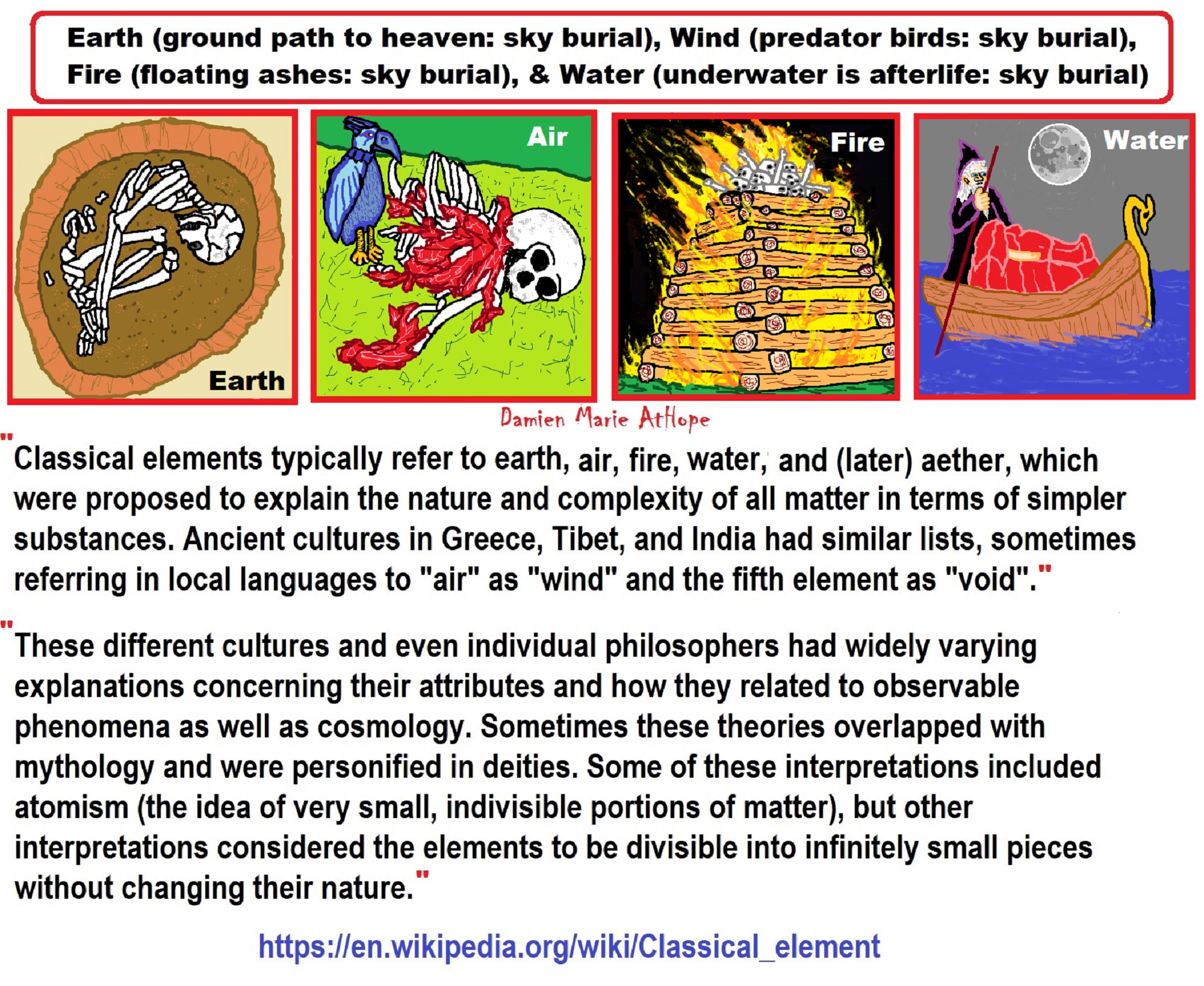
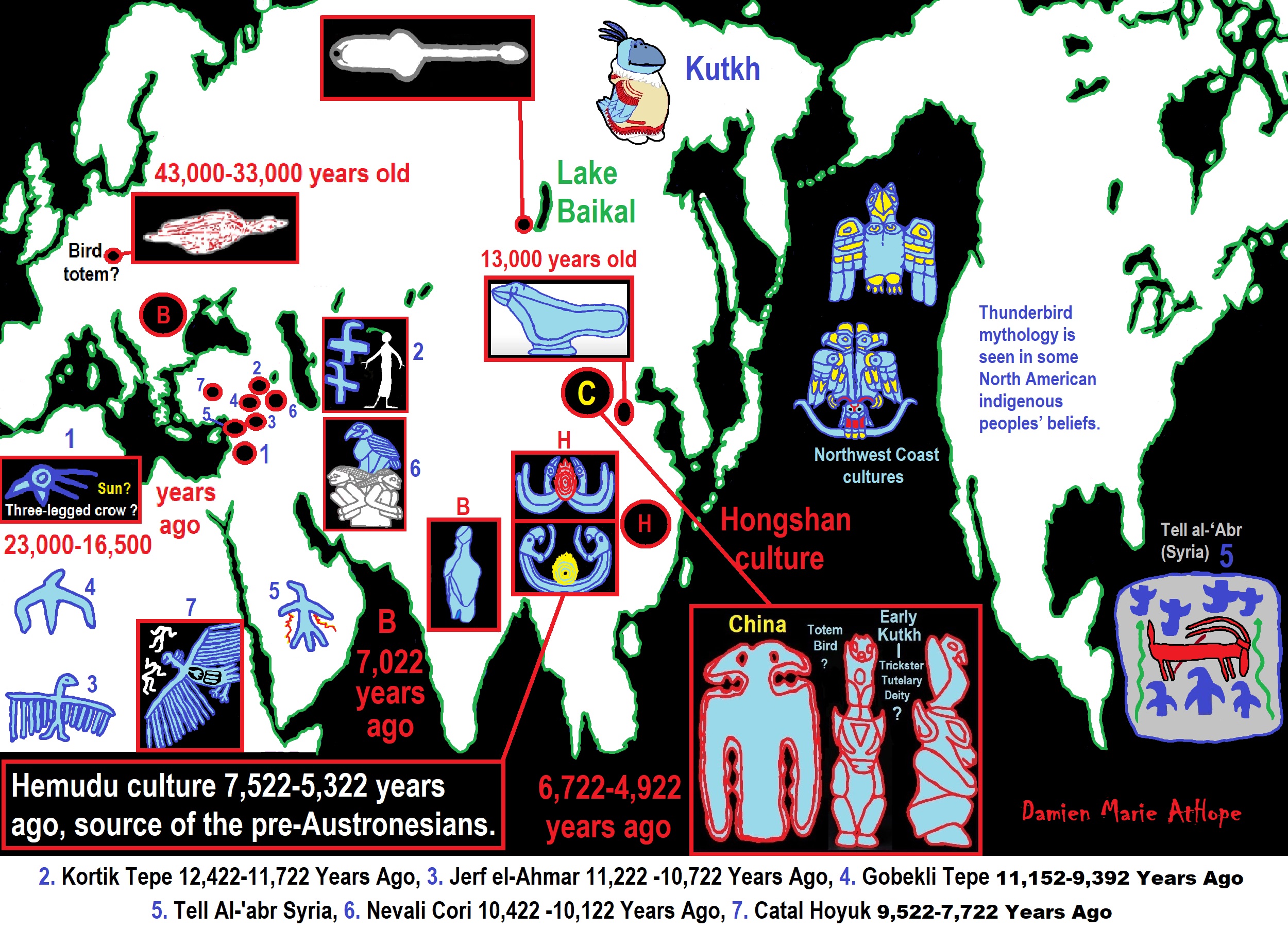
ref, ref, ref, ref, ref, ref, ref, ref, ref, ref, ref, ref, ref, ref
1. Kebaran culture 23,022-16,522 Years Ago, 2. Kortik Tepe 12,422-11,722 Years Ago, 3. Jerf el-Ahmar 11,222 -10,722 Years Ago, 4. Gobekli Tepe 11,152-9,392 Years Ago, 5. Tell Al-‘abrUbaid and Uruk Periods, 6. Nevali Cori 10,422 -10,122 Years Ago, 7. Catal Hoyuk 9,522-7,722 Years Ago
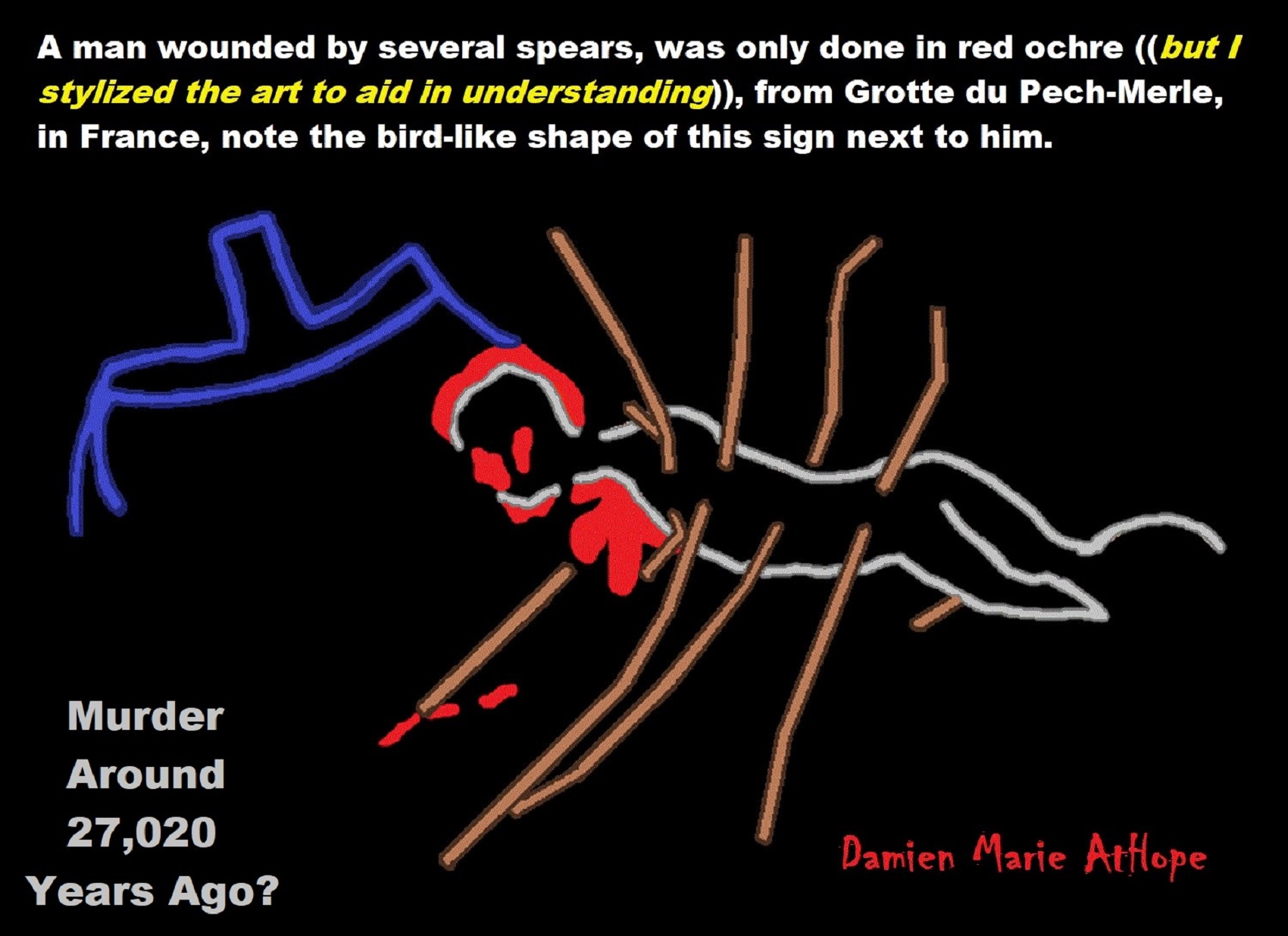
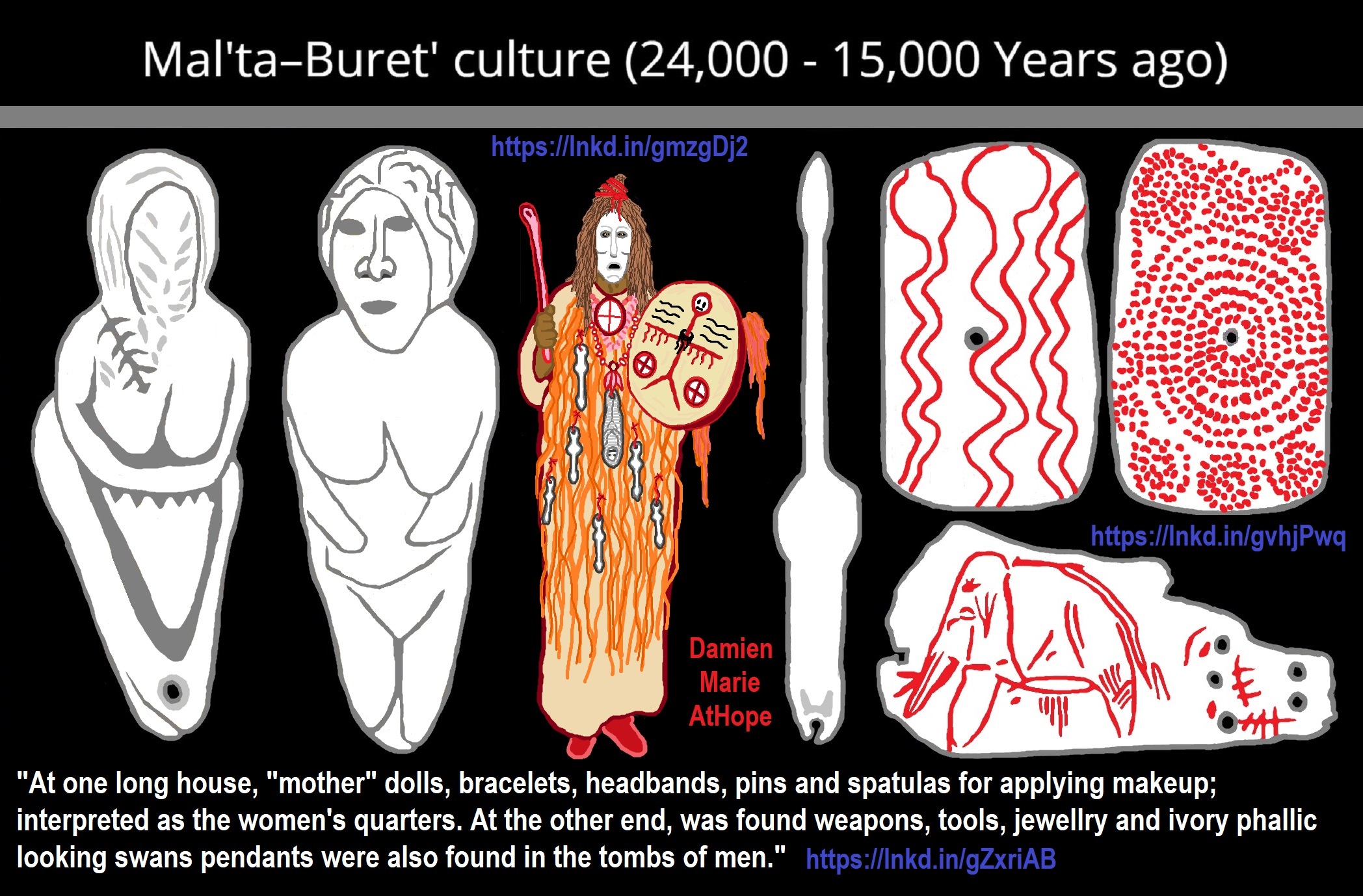
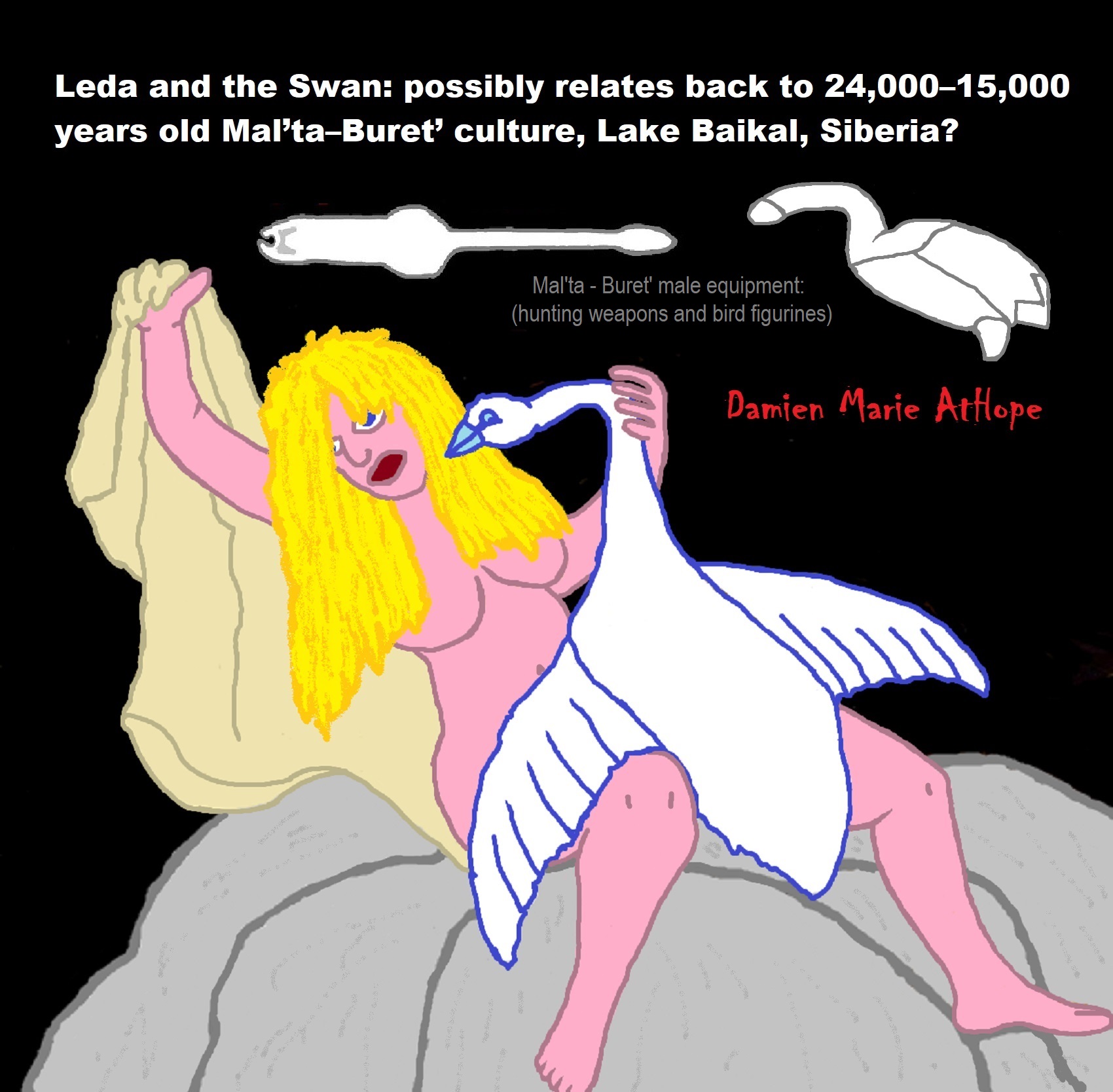
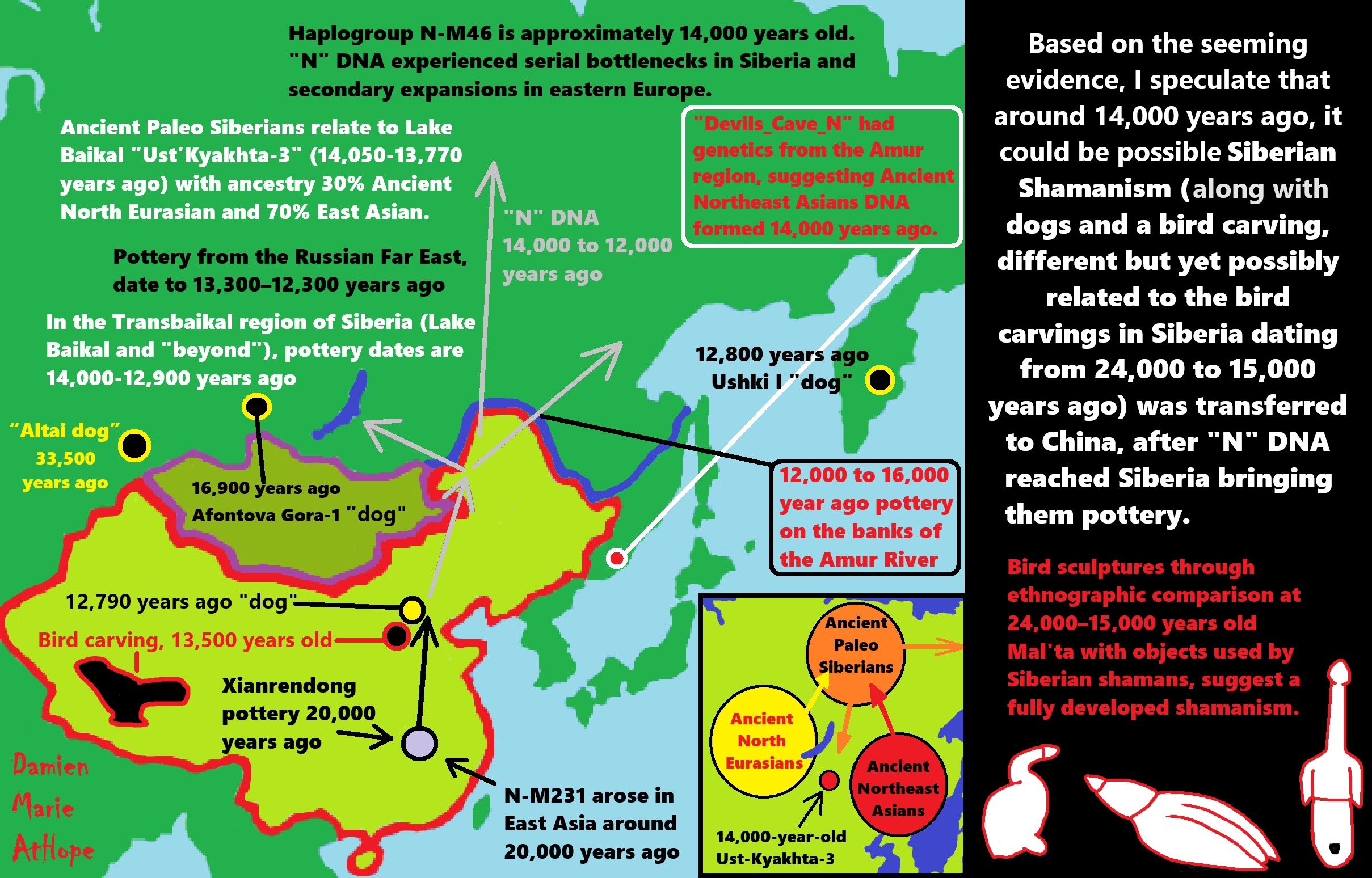
ref, ref, ref, ref, ref, ref, ref, ref, ref, ref, ref, ref, ref, ref, ref, ref
Based on the seeming evidence, I speculate that around 14,000 years ago, it could be possible Siberian Shamanism (along with dogs and a bird carving, different but yet possibly related to the bird carvings in Siberia dating from 24,000 to 15,000 years ago) was transferred to China, after “N” DNA reached Siberia bringing them pottery. Bird sculptures through ethnographic comparison at 24,000–15,000 years old Mal’ta with objects used by Siberian shamans, suggest a fully developed shamanism.
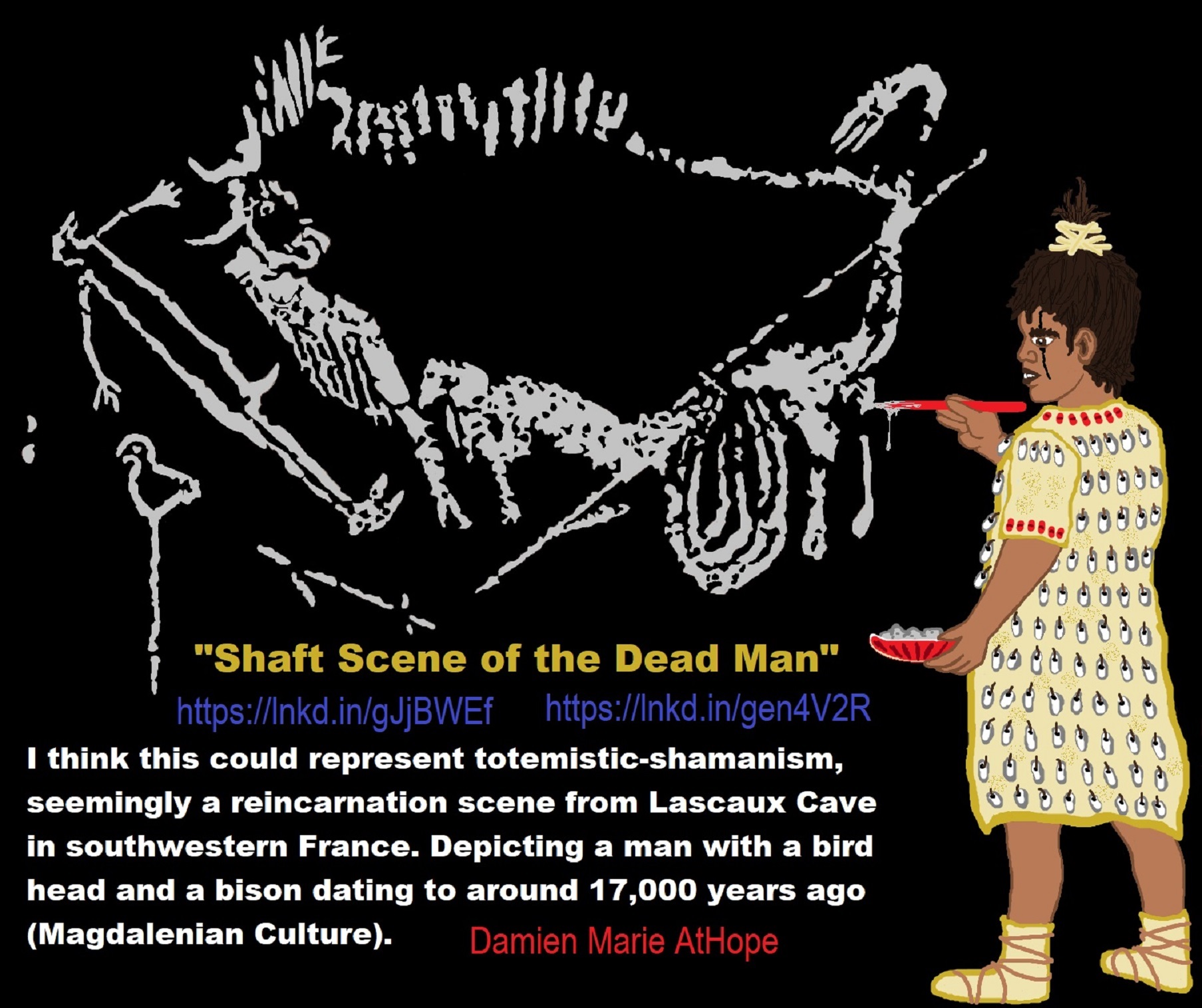
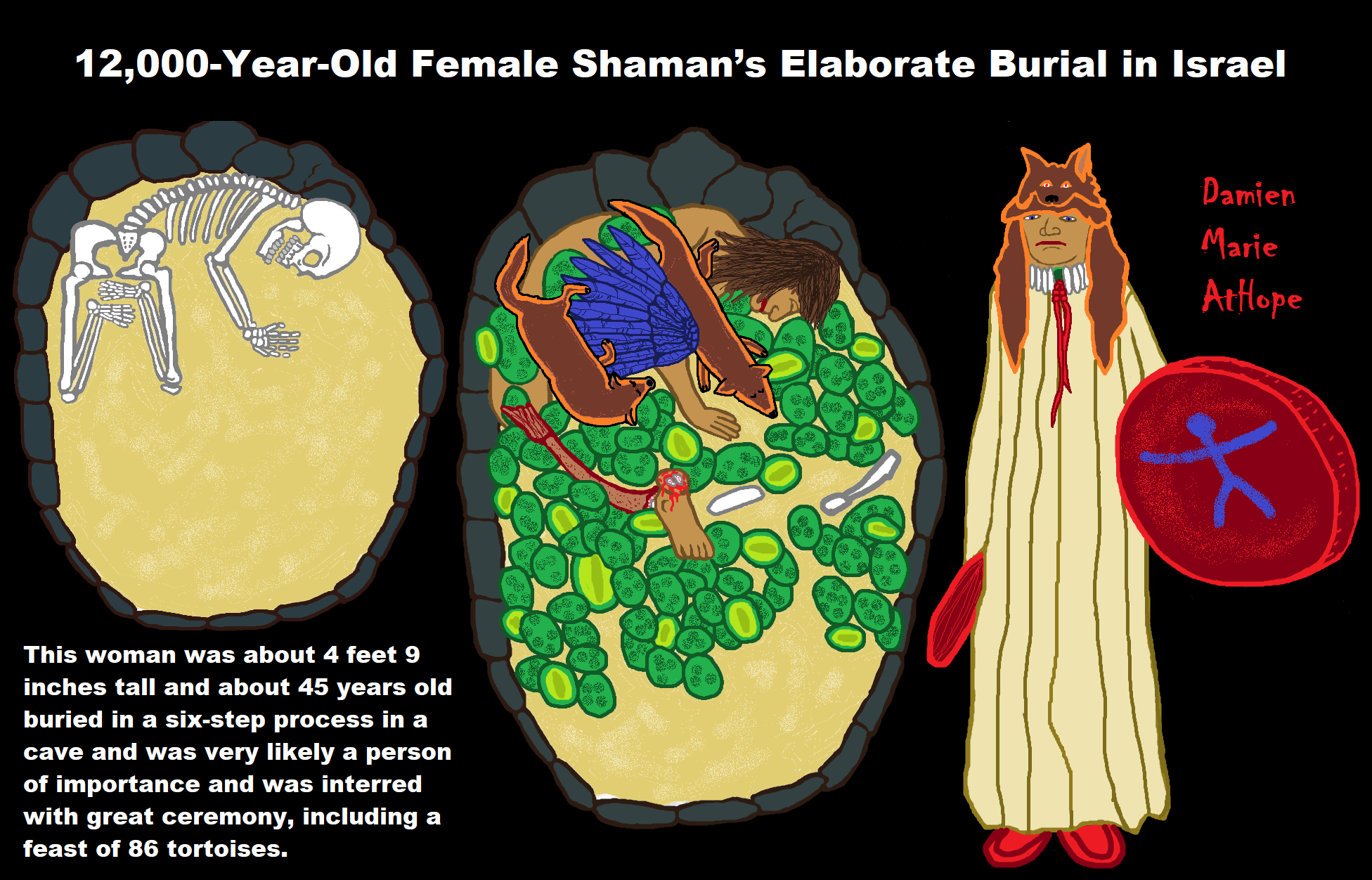

ref, ref, ref, ref, ref, ref, ref, ref, ref, ref, ref, ref, ref, ref, ref, ref, ref, ref, ref
Here are my thoughts/speculations on where I believe is the possible origin of shamanism, which may have begun sometime around 35,000 to 30,000 years ago seen in the emergence of the Gravettian culture, just to outline his thinking, on what thousands of years later led to evolved Asian shamanism, in general, and thus WU shamanism as well. In both Europe-related “shamanism-possible burials” and in Gravettian mitochondrial DNA is a seeming connection to Haplogroup U. And the first believed Shaman proposed burial belonged to Eastern Gravettians/Pavlovian culture at Dolní Věstonice in southern Moravia in the Czech Republic, which is the oldest permanent human settlement that has ever been found. It is at Dolní Věstonice where approximately 27,000-25,000 years ago a seeming female shaman was buried and also there was an ivory totem portrait figure, seemingly of her.
And my thoughts on how cultural/ritual aspects were influenced in the area of Göbekli Tepe. I think it relates to a few different cultures starting in the area before the Neolithic. Two different groups of Siberians first from northwest Siberia with U6 haplogroup 40,000 to 30,000 or so. Then R Haplogroup (mainly haplogroup R1b but also some possible R1a both related to the Ancient North Eurasians). This second group added its “R1b” DNA of around 50% to the two cultures Natufian and Trialetian. To me, it is likely both of these cultures helped create Göbekli Tepe. Then I think the female art or graffiti seen at Göbekli Tepe to me possibly relates to the Epigravettians that made it into Turkey and have similar art in North Italy. I speculate that possibly the Totem pole figurines seen first at Kostenki, next went to Mal’ta in Siberia as seen in their figurines that also seem “Totem-pole-like”, and then with the migrations of R1a it may have inspired the Shigir idol in Russia and the migrations of R1b may have inspired Göbekli Tepe.
Paganism 12,000-4,000 years old
12,000-7,000 years old: related to (Pre-Capitalism)
7,000-5,000 years old: related to (Capitalism) (World War 0) Elite and their slaves!
5,000 years old: related to (Kings and the Rise of the State)
4,000 years old: related to (First Moralistic gods, then the Origin time of Monotheism)
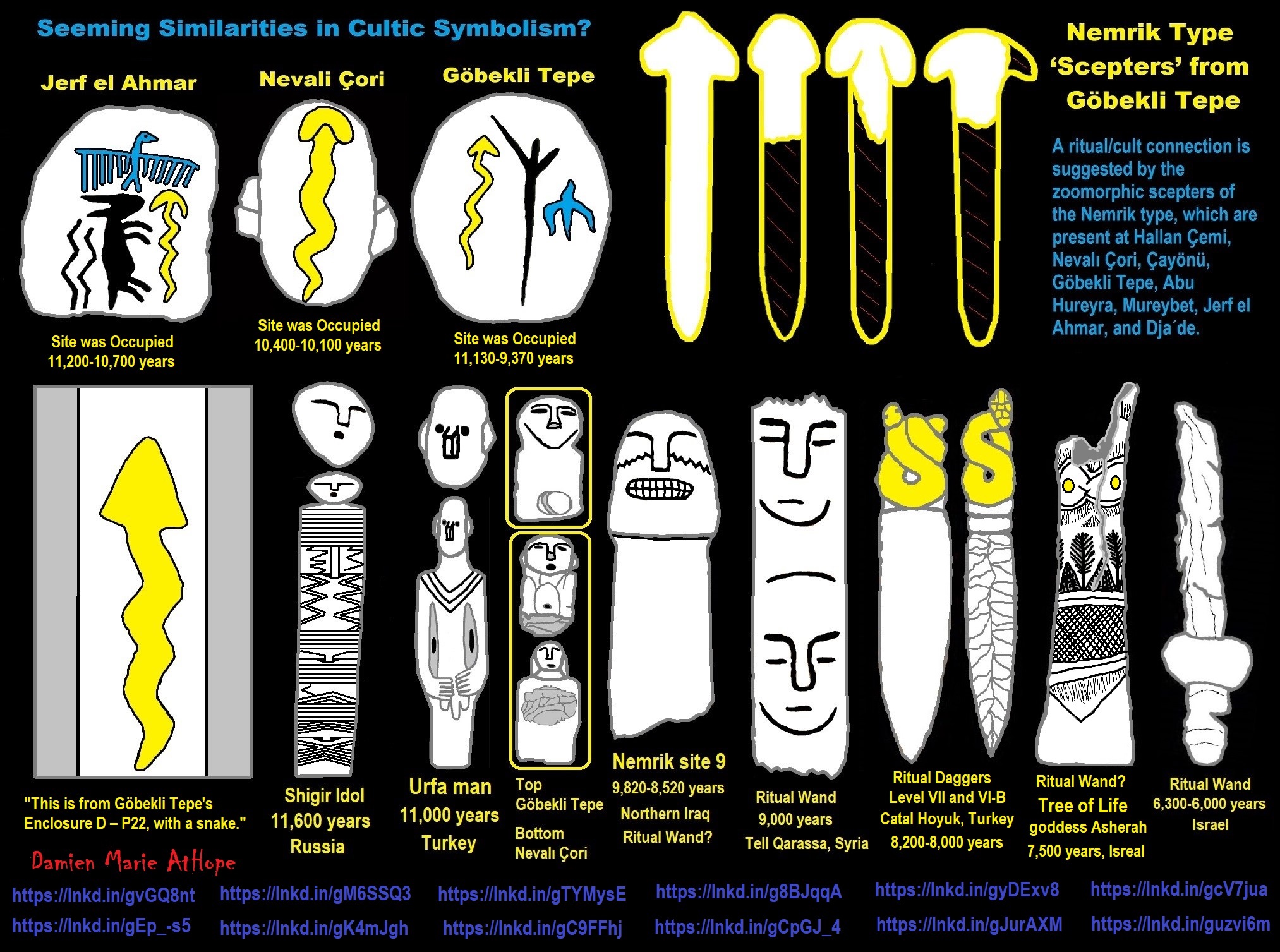
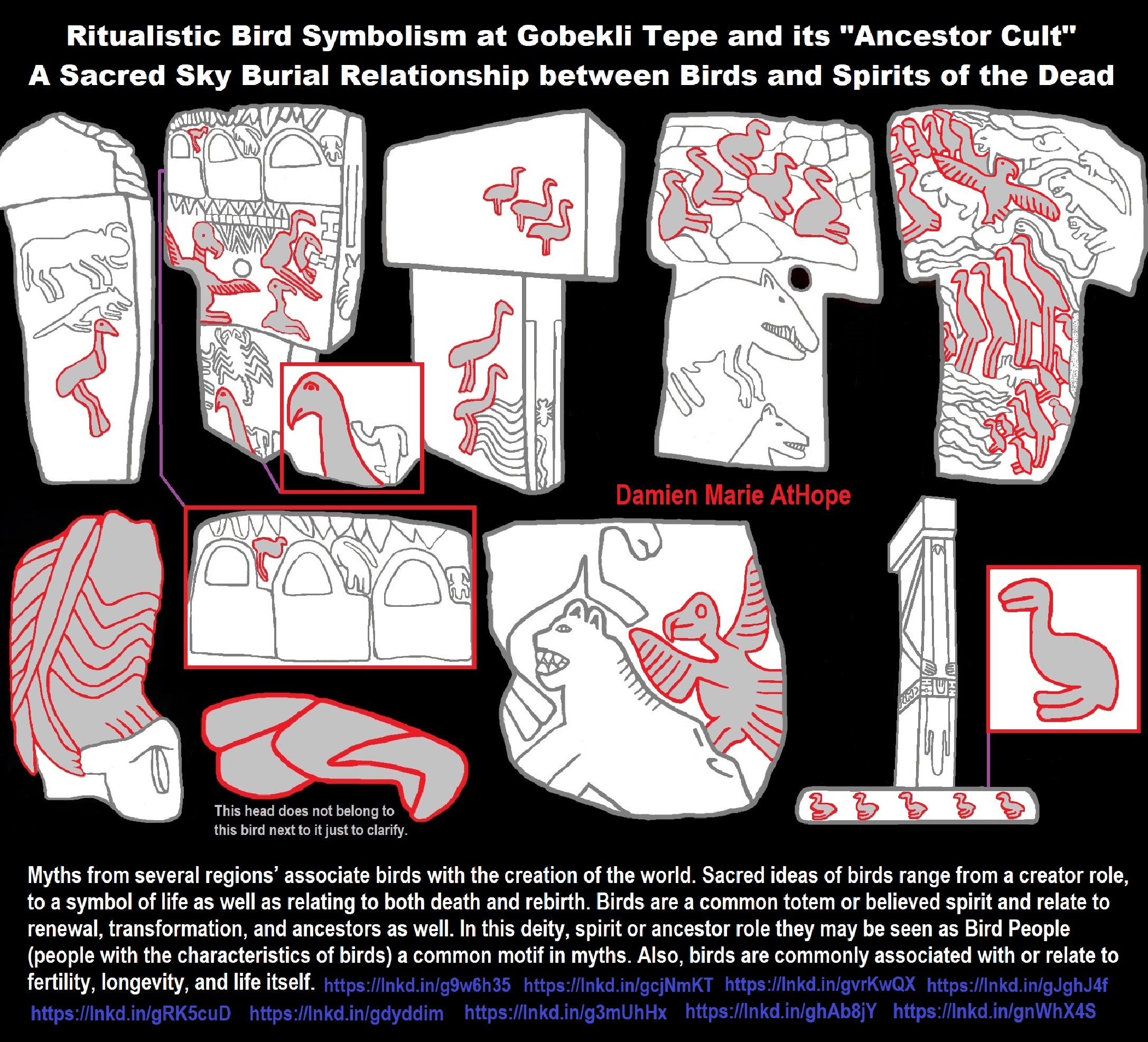
ref, ref, ref, ref, ref, ref, ref, ref, ref, ref, ref, ref, ref, ref, ref, ref, ref
Gobekli Tepe: “first human made temple” around 12,000 years ago
Ritualistic Bird Symbolism at Gobekli Tepe and its “Ancestor Cult” a Sacred Sky Burial Relationship between Birds and Spirits of the Dead
Myths from several regions’ associate birds with the creation of the world. Sacred ideas of birds range from a creator role, to a symbol of life as well as relating to both death and rebirth. Birds are a common totem or believed spirit and relate to renewal, transformation, and ancestors as well. In this deity, spirit or ancestor role they may be seen as Bird People (people with the characteristics of birds) a common motif in myths. Also, birds are commonly associated with or relate to fertility, longevity, and life itself.
Skulls From 11,500-year Ancestor Cult Found in Oldest Temple in the World
“Carved skulls indicate that Gobekli Tepe, known for enigmatic monumental pillars carved with animals and shapes, was ancestor worship site.” ref
“Ancestor Cult: a ritualistic system of veneration, honor, and propitiation of the spirits of dead ancestors for the purpose of avoiding evil consequences and securing good fortune.” ref
“Ancestor worship: the custom of venerating deceased ancestors who are considered still a part of the family and whose spirits are believed to have the power to intervene in the affairs of the living.” ref
“Veneration of the dead, including one’s ancestors, is based on love and respect for the deceased. In some cultures, it is related to beliefs that the dead have a continued existence, and may possess the ability to influence the fortune of the living. Some groups venerate their direct, familial ancestors. Certain sects and religions, in particular the Roman Catholic Church, venerate saints as intercessors with God, as well as pray for departed souls in Purgatory. In Europe, Asia, Oceania, African and Afro-diasporic cultures, the goal of ancestor veneration is to ensure the ancestors’ continued well-being and positive disposition towards the living, and sometimes to ask for special favors or assistance. The social or non-religious function of ancestor veneration is to cultivate kinship values, such as filial piety, family loyalty, and continuity of the family lineage. Ancestor veneration occurs in societies with every degree of social, political, and technological complexity, and it remains an important component of various religious practices in modern times.” ref
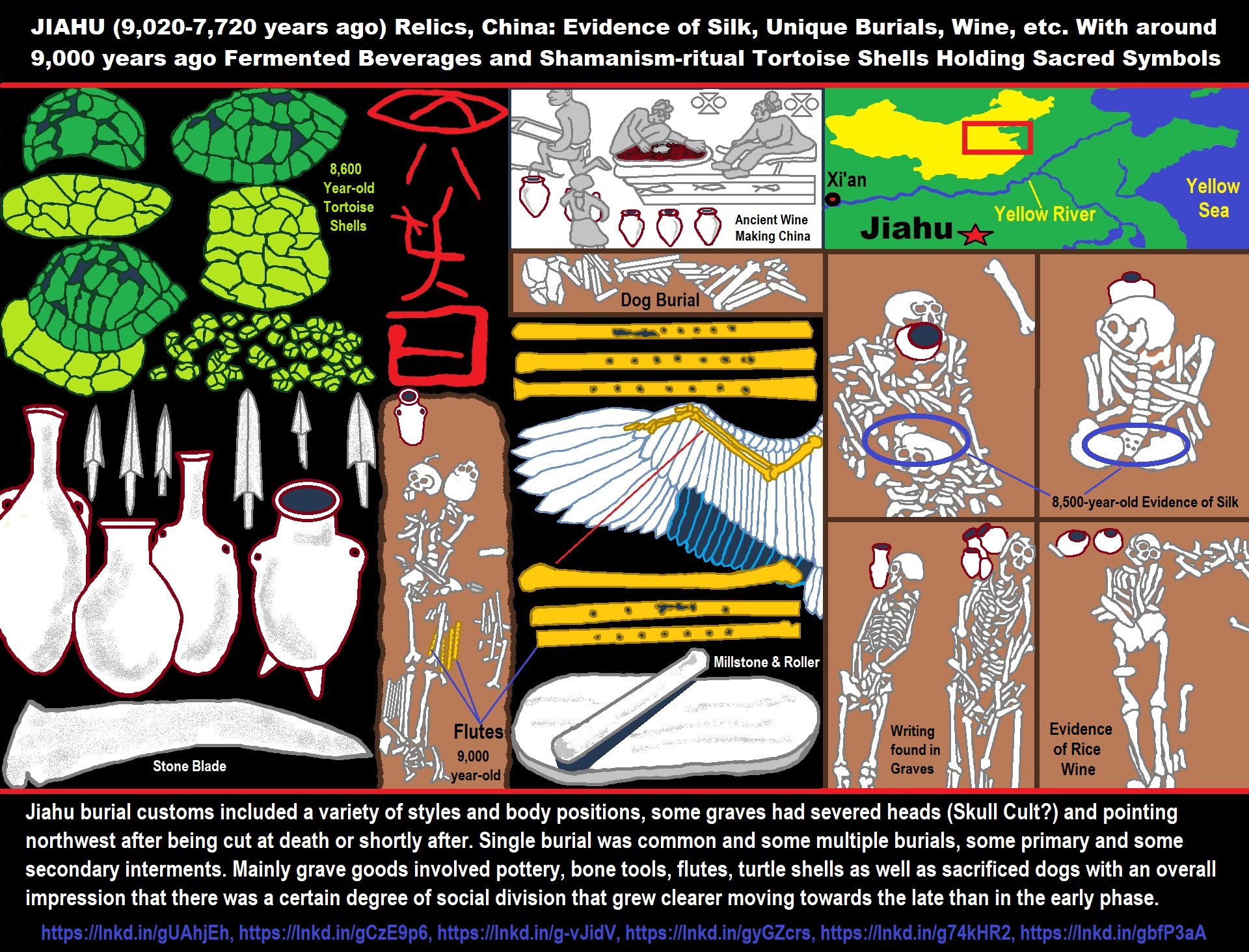
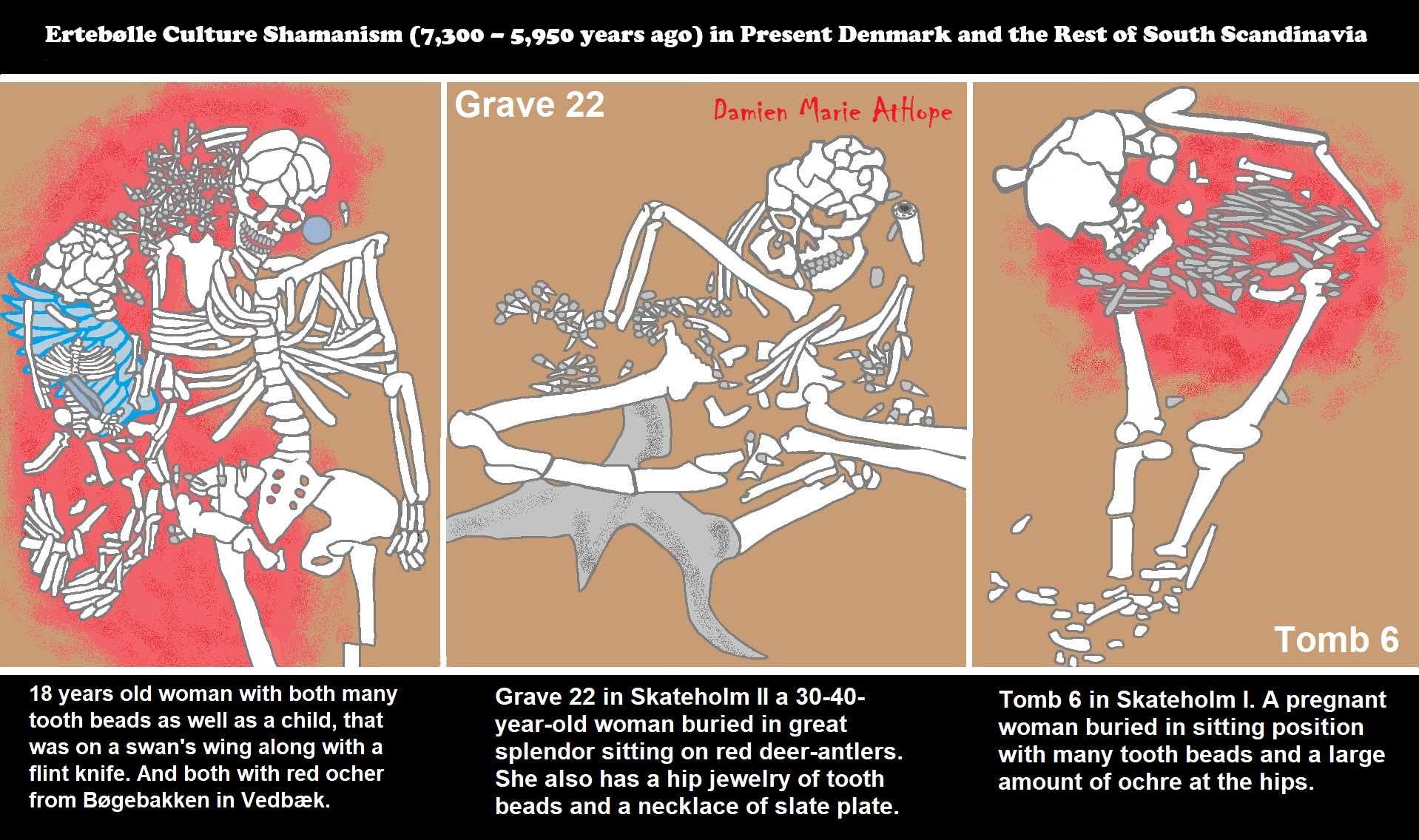
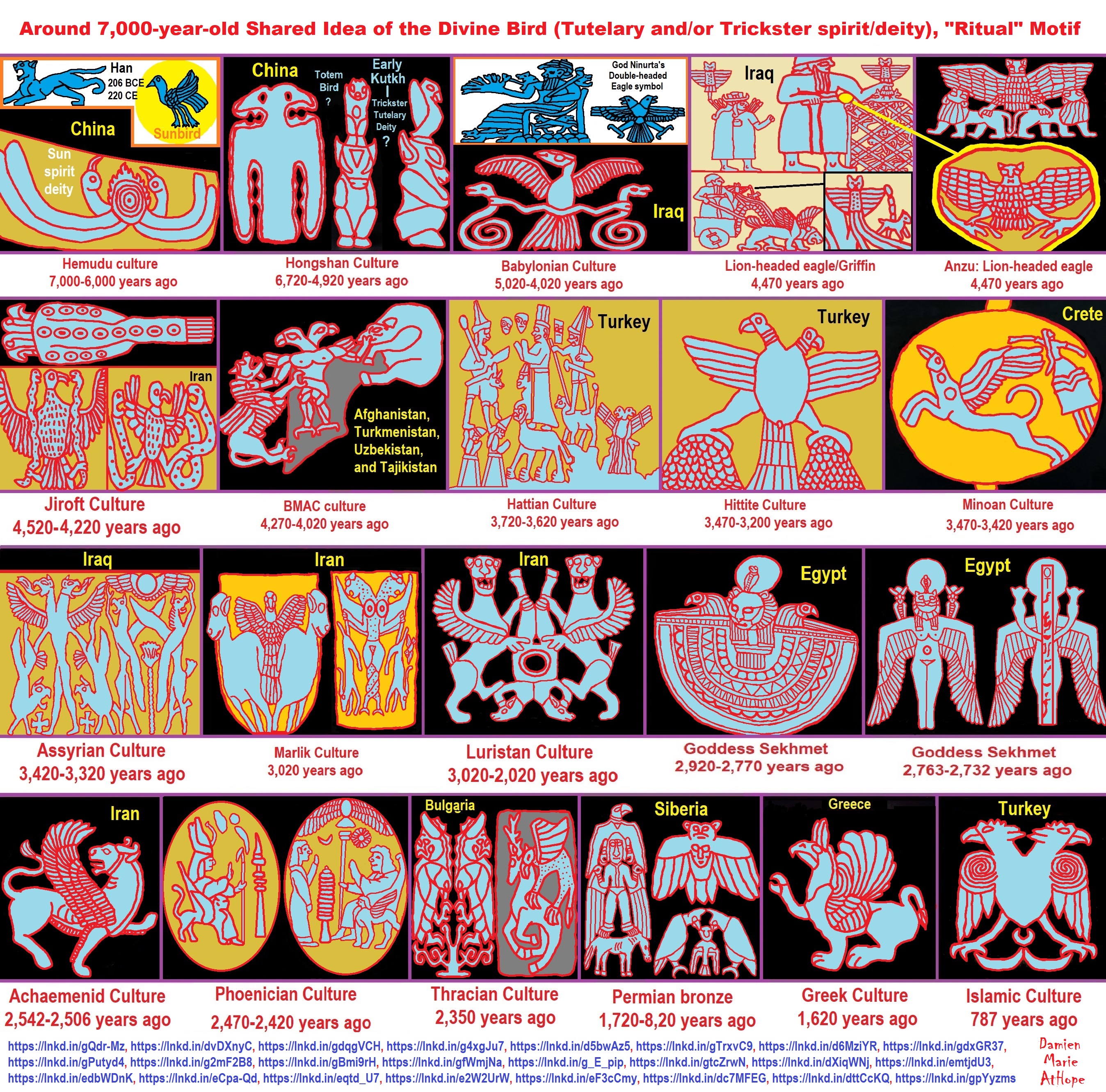

ref, ref, ref, ref, ref, ref, ref
Stonehenge: Paganistic Burial and Astrological Ritual Complex, England (5,100-3,600 years ago)
*Around 5,000 years ago Stonehenge (Britain):
Stonehenge: Paganistic Burial and Astrological Ritual Complex, England.
Stonehenge evolved in several construction phases, 1 (5,100 years ago), 2 (5,000 years ago), 3 I (4,600 years ago), 3 II (4,600-4,400 years ago), 3 III (2400-4,280 years ago), 3 IV (4,280-3,930 years ago), & 3 V (3,930-3,600 years ago). Anatolian/Turkish-farmers built Britain’s famous Stonehenge, as well as current males of Britain, 60-65% have Turkish genetics. Almost as the same as in Ireland where 85 percent of Irish men are descended from farming people that arrived 6,000 years ago. At or around Stonehenge 5,000-4,400 years ago, there were two separate burial rites, either letting the birds feed on bodies or cremation. And a 4,000-year-old burial pit for elite contains 14 females and only 9 males, as well as a chieftain’s grave, held several items including the depicted 4,000-year-old dagger. And a 4,000-year-old child’s grave held the depicted Folkton drums. As well as items from 4,600-3,600 involved gold beads, necklaces, earrings, pendants, and other jewelry show sophisticated burial culture. ref, ref, ref, ref, ref, ref, & ref
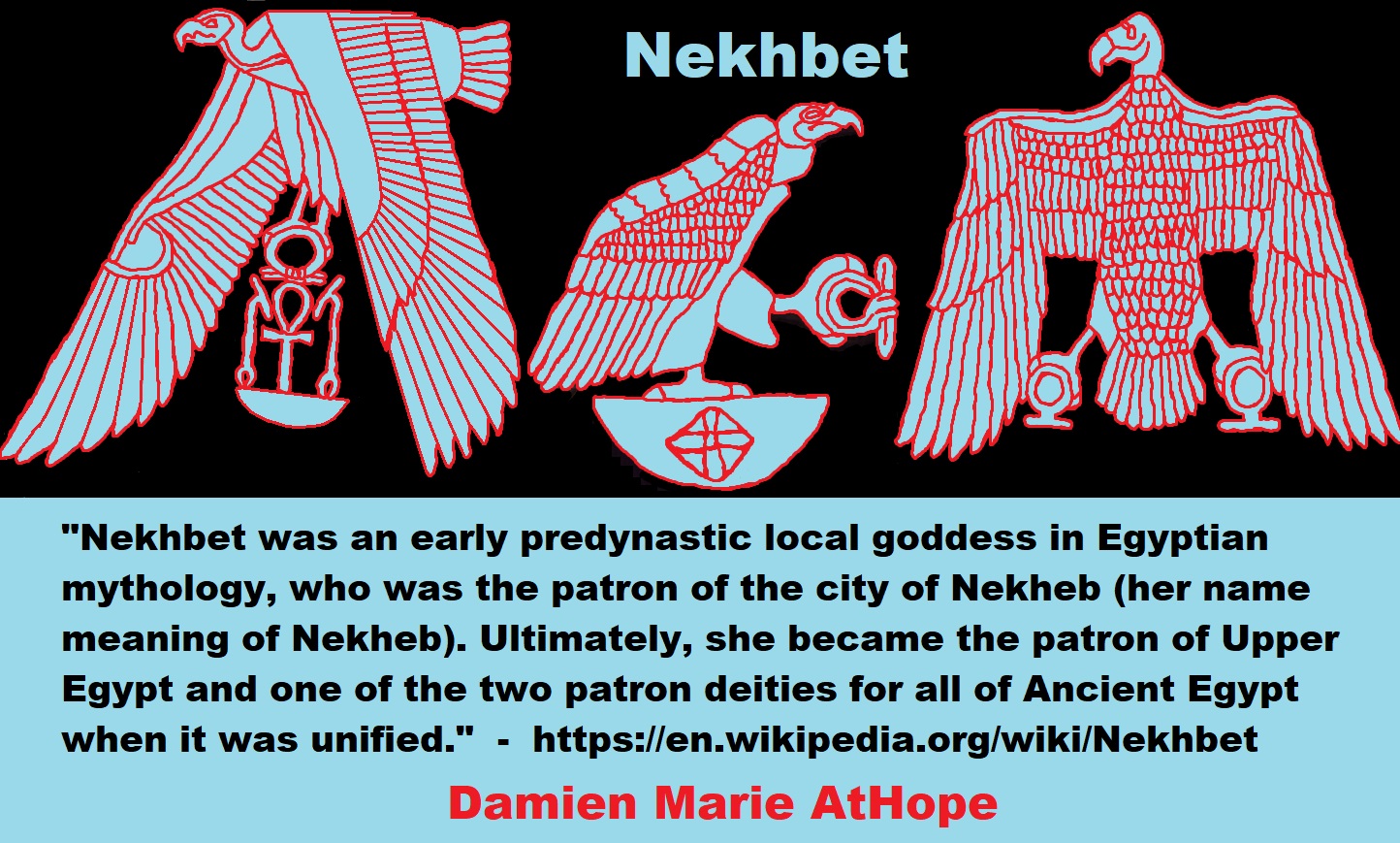
Sky burials: Animism, Totemism, Shamanism, and Paganism
‘Sky Burial’ theory and its possible origins at
least 12,000 years ago to likely 30,000 years ago or older.
Understanding Religion Evolution:
- Animism (Africa: 100,000 years ago), (Animism | Britannica.com)
- Totemism (Europe: 50,000 years ago), (Totemism – Anthropology)
- Shamanism (Siberia: 30,000 years ago), (Shamanism | Britannica.com)
- Paganism (Turkey: 12,000 years ago), (BBC – Religion: Paganism)
- Progressed organized religion (Egypt: 5,000 years ago), (Prehistoric Egypt 40,000 years ago to The First Dynasty 5,150 years ago)
“Religion is an Evolved Product”
“An Archaeological/Anthropological Understanding of Religion Evolution”
If you are a religious believer, may I remind you that faith in the acquisition of knowledge is not a valid method worth believing in. Because, what proof is “faith”, of anything religion claims by faith, as many people have different faith even in the same religion?
Sky burial (Tibetan: བྱ་གཏོར་, Wylie: bya gtor, lit. “bird-scattered”) is a funeral practice in which a human corpse is placed on a mountaintop to decompose while exposed to the elements or to be eaten by scavenging animals, especially carrion birds. It is a specific type of the general practice of excarnation. It is practiced in the Chinese provinces and autonomous regions of Tibet, Qinghai, Sichuan and Inner Mongolia, as well as in Mongolia, Bhutan, Nepal, and parts of India such as Sikkim and Zanskar. The Tibetan sky-burials appear to have evolved from ancient practices of defleshing corpses as discovered in archeological finds in the region. These practices most likely came out of practical considerations, but they could also be related to more ceremonial practices similar to the suspected sky burial evidence found at Göbekli Tepe (11,500 years before present) and Stonehenge (4,500 years BP). Most of Tibet is above the tree line, and the scarcity of timber makes cremation economically unfeasible. Additionally, subsurface interment is difficult since the active layer is not more than a few centimeters deep, with solid rock or permafrost beneath the surface. For Tibetan Buddhists, sky burial and cremation are templates of instructional teaching on the impermanence of life. Jhator is considered an act of generosity on the part of the deceased, since the deceased and his/her surviving relatives are providing food to sustain living beings. Such generosity and compassion for all beings are important virtues in Buddhism. Although some observers have suggested that jhator is also meant to unite the deceased person with the sky or sacred realm, this does not seem consistent with most of the knowledgeable commentary and eyewitness reports, which indicate that Tibetans believe that at this point life has completely left the body and the body contains nothing more than simple flesh. Only people who directly know the deceased usually observe it, when the excarnation happens at night. The tradition and custom of the jhator afforded Traditional Tibetan medicine and thangkaiconography with a particular insight into the interior workings of the human body. Pieces of the human skeleton were employed in ritual tools such as the skullcup, thigh-bone trumpet, etc. The ‘symbolic bone ornaments’ (Skt: aṣṭhiamudrā; Tib: rus pa’i rgyanl phyag rgya) are also known as “mudra” or ‘seals’. The Hevajra Tantra identifies the Symbolic Bone Ornaments with the Five Wisdoms and Jamgon Kongtrul in his commentary to the Hevajra Tantra explains this further. The locations of preparation and sky burial are understood in the Vajrayana Buddhist traditions as charnel grounds. Comparable practices are part of Zoroastrian burial practices where deceased are exposed to the elements and birds of prey on stone structures called Dakhma. Few such places remain operational today due to religious marginalisation, urbanisation and the decimation of vulture populations. The majority of Tibetan people and many Mongols adhere to Vajrayana Buddhism, which teaches the transmigration of spirits. There is no need to preserve the body, as it is now an empty vessel. Birds may eat it or nature may cause it to decompose. The function of the sky burial is simply to dispose of the remains in as generous a way as possible (the source of the practice’s Tibetan name). In much of Tibet and Qinghai, the ground is too hard and rocky to dig a grave, and, due to the scarcity of fuel and timber, sky burials were typically more practical than the traditional Buddhist practice of cremation. In the past, cremation was limited to high lamas and some other dignitaries, but modern technology and difficulties with sky burial have led to an increased use by commoners. The customs are first recorded in an indigenous 12th-century Buddhist treatise, which is colloquially known as the Book of the Dead (Bardo Thodol). Tibetan tantricism appears to have influenced the procedure. The body is cut up according to instructions given by a lama or adept. Mongolians traditionally buried their dead (sometimes with human or animal sacrifice for the wealthier chieftains) but the Tümed adopted sky burial following their conversion to Tibetan Buddhism under Altan Khan during the Ming Dynasty and other banners subsequently converted under the Manchu Qing Dynasty. Sky burial was initially treated as a primitive superstition and sanitation concern by the Communist governments of both the PRC and Mongolia; both states closed many temples and China banned the practice completely from the Cultural Revolution of the late 1960s until the 1980s. Sky burial nonetheless continued to be practiced in rural areas and has even received official protection in recent years. However, the practice continues to diminish for a number of reasons, including restrictions on its practice near urban areas and diminishing numbers of vultures in rural districts. Where the vultures remain, they often react badly to corpses treated with medicine and disinfectants at modern hospitals. Finally, Tibetan practice holds that the yak carrying the body to the charnel grounds should be set free, making the rite much more expensive than a service at a crematorium. A traditional jhator is performed in specified locations in Tibet (and surrounding areas traditionally occupied by Tibetans). Drigung Monastery is one of the three most important jhatorsites.
How Sky Burial Works?
The procedure takes place on a large flat rock long used for the purpose. The charnel ground (durtro) is always higher than its surroundings. It may be very simple, consisting only of the flat rock, or it may be more elaborate, incorporating temples and stupa (chorten in Tibetan). Relatives may remain nearby during the jhator, possibly in a place where they cannot see it directly. The jhator usually takes place at dawn. The full jhator procedure (as described below) is elaborate and expensive. Those who cannot afford it simply place their deceased on a high rock where the body decomposes or is eaten by birds and animals. The birds are already circling as the man lays the dead woman out on the stones. Naked and stiff, the corpse is as cold as the surrounding landscape and her eyes as gray as the clouds that haunt the looming Himalayan peaks. The ritual plays out in staggering isolation; high on the Tibetan plateau and amid some of the least explored wilderness on Earth. The man draws his flaying knife and tests its sharpness with his thumb. Then he sets to work. With deep, determined slices, he separates hair from scalp, then limbs from torso and flesh from bone. Ancient custom animates each movement, as he steadily reduces the corpse to mere fragments in the hallowed clearing. Vultures already surround him in huddled, black masses. Overhead, dozens more wind down the last of their spiral descent, tracing invisible circles in the air, and land at last to feast. Indifferent to the human in their midst, the birds tear into the meal with ravenous enthusiasm. Meanwhile the man, a rogyapa, or “breaker of bodies,” calmly sets aside his blade and grabs a hammer to pulverize the remaining bones. Known as sky burial or celestial burial to outsiders, this is the Tibetan practice of jhator, or the giving of alms to birds, in which the body of the deceased is dismantled to facilitate faster and more thorough consumption by vultures. To foreign eyes, this unique funeral rite may seem callous or morbid. Yet within the spiritual and geographic contexts of Tibetan culture, it is the perfect fate for the body humans leave behind in death. Humans have a complex relationship with death, and as we’ll see in the pages ahead, the Tibetan people are no exception. First, let’s strip away the layers of religion and myth surrounding sky burial and examine geography’s role. The Chinese Tibet Autonomous Region (TAR) occupies roughly 471,700 square miles (1.2 million square kilometers) of Central Asia to the northeast of India. Encompassing some of the highest peaks of the Himalayan Mountains and the least explored regions on the planet, the average altitude for a Tibetan settlement is roughly 16,500 feet (5,000 meters) above sea level [source: Beall]. To put that in perspective, Leadville, Colo., ranks as the highest incorporated city in the United States at 10,152 feet (3,094 meters). No understanding of sky burial is complete without a glimpse into the spiritual heart of Tibet. While the rite of jhator may seem callous in regard to mortality, Tibetan Buddhists are deeply concerned with the reality of death. Recorded Tibetan history reaches back 2,300 years to a pre-Buddhist age ruled by warriors, shamans and a line of kings said to have descended from the sky on a magical ladder. The region’s early Bön religion was animistic; it viewed nonhumans as spiritual beings. While sky burial was not in vogue during the days of the original Tibetan kings, the holiness of sky and birds was already present. Up until the 20th century, virtually the only application of the wheel in Tibetan culture was the use of mani, or prayer, wheels in spiritual blessings. This fact stresses the inward nature of the society, one that places a stronger emphasis on the exploration of consciousness and spirituality than the material world. Make no mistake: Science has its place in Tibetan culture. The region’s warrior kings of the seventh and eighth centuries imported a great deal of mathematics, medicine and architecture from neighboring areas. They also introduced Buddhism and its emphasis on karma, reincarnation and the middle path between extreme ideas. When anticipating an important journey, it pays to prepare. And since Tibetan Buddhists view death as the journey from this life to the next, they place tremendous importance on steps to ensure a safe voyage through the space betwixt death and rebirth — a dreamlike intermediate state known as bardo. If you were planning a trip to, say, Tibet, you’d probably pick up a guidebook written by people who have actually traveled there. When planning the ultimate trip, therefore, Tibetan Buddhists turn to the holy men who, through intense meditation, claim knowledge of both past lives and the death journey. A guide also exists in the form of the eighth-century text “Bardo Thodol” or “Liberation in the Intermediate State Through Hearing.” Westerners often call this work the “Tibetan Book of the Dead.” Ref
Sacred Bird Shrine (to me this is now hidden but still Sky burial connected beliefs)
Torii Gates (Japanese 鳥居, literally bird abode )
A torii (鳥居, literally bird abode) is a traditional Japanese gate most commonly found at the entrance of or within a Shinto shrine, where it symbolically marks the transition from the profane to sacred. The presence of a torii at the entrance is usually the simplest way to identify Shinto shrines, and a small torii icon represents them on Japanese road maps. The first appearance of Torii gates in Japan can be reliably pinpointed to at least the mid-Heian period because they are mentioned in a text written in 922. The oldest existing stone torii was built in the 12th century and belongs to a Hachiman Shrine in Yamagata prefecture. The oldest wooden torii is a ryōbu torii (see description below) at Kubō Hachiman Shrine in Yamanashi prefecture built in 1535. Torii gates were traditionally made from wood or stone, but today they can be also made of reinforced concrete, copper, stainless steel or other materials. They are usually either unpainted or painted vermilion with a black upper lintel. Inari shrines typically have many torii because those who have been successful in business often donate in gratitude a torii to Inari, kami of fertility and industry. Fushimi Inari-taisha in Kyoto has thousands of such torii, each bearing the donor’s name. The function of a torii is to mark the entrance to a sacred space. For this reason, the road leading to a Shinto shrine (sandō) is almost always straddled by one or more torii, which are therefore the easiest way to distinguish a shrine from a Buddhist temple. If the sandōpasses under multiple torii, the outer of them is called ichi no torii (一の鳥居, first torii). The following ones, closer to the shrine, are usually called, in order, ni no torii (二の鳥居, second torii) and san no torii (三の鳥居, third torii). Other torii can be found farther into the shrine to represent increasing levels of holiness as one nears the inner sanctuary (honden), core of the shrine. Also, because of the strong relationship between Shinto shrines and the Japanese Imperial family, a torii stands also in front of the tomb of each Emperor. Whether torii existed in Japan before Buddhism or, to the contrary, arrived with it (see section below) is, however, an open question. In the past torii must have been used also at the entrance of Buddhist temples. Even today, as prominent a temple as Osaka‘s Shitennō-ji, founded in 593 by Shōtoku Taishi and the oldest state-built Buddhist temple in the world (and country), has a torii straddling one of its entrances. (The original wooden torii burned in 1294 and was then replaced by one in stone.) Many Buddhist temples include one or more Shinto shrines dedicated to their tutelary kami (“Chinjusha“), and in that case a torii marks the shrine’s entrance. Benzaiten is a syncretic goddess derived from the Indian divinity Sarasvati which unites elements of both Shinto and Buddhism. For this reason halls dedicated to her can be found at both temples and shrines, and in either case in front of the hall stands a torii. The goddess herself is sometimes portrayed with a torii on her head (see photo below). Finally, until the Meiji period (1868–1912) torii were routinely adorned with plaques carrying Buddhist sutras. The association between Japanese Buddhism and the torii is therefore old and profound. Yamabushi, Japanese mountain ascetic hermits with a long tradition as mighty warriors endowed with supernatural powers, sometimes use as their symbol a torii. The torii is also sometimes used as a symbol of Japan in non-religious contexts. For example, it is the symbol of the Marine Corps Security Force Regiment and the 187th Infantry Regiment, 101st Airborne Division and of other US forces in Japan. The origins of the torii are unknown and there are several different theories on the subject, none of which has gained universal acceptance. Because the use of symbolic gates is widespread in Asia—such structures can be found for example in India, China, Thailand, Korea, and within Nicobarese and Shompen villages—historians believe they may be an imported tradition. They may, for example, have originated in India from the torana gates in the monastery of Sanchi in central India. According to this theory, the torana was adopted by Shingon Buddhism founder Kūkai, who used it to demarcate the sacred space used for the homa ceremony. The hypothesis arose in the 19th and 20th centuries due to similarities in structure and name between the two gates. Linguistic and historical objections have now emerged, but no conclusion has yet been reached. In Bangkok, Thailand, a Brahmin structure called Sao Ching Cha strongly resembles a torii. Functionally, however, it is very different as it is used as a swing. During ceremonies Brahmins swing, trying to grab a bag of coins placed on one of the pillars. Other theories claim torii may be related to the pailou of China. These structures however can assume a great variety of forms, only some of which actually somewhat resemble a torii. The same goes for Korea’s “hongsal-mun”. Unlike its Chinese counterpart, the hongsal-mun does not vary greatly in design and is always painted red, with “arrowsticks” located on the top of the structure (hence the name). Various tentative etymologies of the word torii exist. According to one of them, the name derives from the term tōri-iru (通り入る, pass through and enter). Another hypothesis takes the name literally: the gate would originally have been some kind of bird perch. This is based on the religious use of bird perches in Asia, such as the Korean sotdae(솟대), which are poles with one or more wooden birds resting on their top. Commonly found in groups at the entrance of villages together with totem poles called jangseung, they are talismans which ward off evil spirits and bring the villagers good luck. “Bird perches” similar in form and function to the sotdae exist also in other shamanistic cultures in China, Mongolia and Siberia. Although they do not look like torii and serve a different function, these “bird perches” show how birds in several Asian cultures are believed to have magic or spiritual properties, and may therefore help explain the enigmatic literal meaning of the torii’s name (“bird perch”). Poles believed to have supported wooden bird figures very similar to the sotdae have been found together with wooden birds, and are believed by some historians to have somehow evolved into today’s torii. Intriguingly, in both Korea and Japan single poles represent deities (kami in the case of Japan) and hashira (柱, pole) is the counter for kami. In Japan birds have also long had a connection with the dead, this may mean it was born in connection with some prehistorical funerary rite. Ancient Japanese texts like the Kojiki and the Nihon Shoki for example mention how Yamato Takeru after his death became a white bird and in that form chose a place for his own burial. For this reason, his mausoleum was then called shiratori misasagi (白鳥陵, white bird grave). Many later texts also show some relationship between dead souls and white birds, a link common also in other cultures, shamanic like the Japanese. Bird motifs from the Yayoi and Kofun periods associating birds with the dead have also been found in several archeological sites. This relationship between birds and death would also explain why, in spite of their name, no visible trace of birds remains in today’s torii: birds were symbols of death, which in Shinto brings defilement (kegare). Finally, the possibility that torii are a Japanese invention cannot be discounted. The first toriicould have evolved already with their present function through the following sequence of events:
- Four posts were placed at the corners of a sacred area and connected with a rope, thus dividing sacred and mundane.
- Two taller posts were then placed at the center of the most auspicious direction, to let the priest in.
- A rope was tied from one post to the other to mark the border between the outside and the inside, the sacred and the mundane. This hypothetical stage corresponds to a type of torii in actual use, the so-called shime-torii (注連鳥居), an example of which can be seen in front of Ōmiwa Shrine‘s haiden in Kyoto (see also the photo in the gallery).
- The rope was replaced by a lintel.
- Because the gate was structurally weak, it was reinforced with a tie-beam, and what is today called shinmei torii (神明鳥居) or futabashira torii (二柱鳥居, two pillar torii) (see illustration at right) was born. This theory however does nothing to explain how the gates got their name.
The shinmei torii, whose structure agrees with the historians’ reconstruction, consists of just four unbarked and unpainted logs: two vertical pillars (hashira (柱)) topped by a horizontal lintel(kasagi (笠木)) and kept together by a tie-beam ( nuki (貫)). The pillars may have a slight inward inclination called uchikorobi (内転び) or just korobi (転び). Its parts are always straight.
- Torii may be unpainted or painted vermilion and black. The color black is limited to the kasagiand the nemaki (根巻, see illustration). Very rarely torii can be found also in other colors. Kamakura‘s Kamakura-gū for example has a white and red one.
- The kasagi may be reinforced underneath by a second horizontal lintel called shimaki or shimagi (島木).
- Kasagi and the shimaki may have an upward curve called sorimashi (反り増し).
- The nuki is often held in place by wedges (kusabi (楔)). The kusabi in many cases are purely ornamental.
- At the center of the nuki there may be a supporting strut called gakuzuka (額束), sometimes covered by a tablet carrying the name of the shrine (see photo in the gallery).
- The pillars often rest on a white stone ring called kamebara (亀腹, turtle belly) or daiishi (台石, base stone). The stone is sometimes replaced by a decorative black sleeve called nemaki (根巻, root sleeve).
- At the top of the pillars there may be a decorative ring called daiwa (台輪, big ring).
- The gate has a purely symbolic function and therefore there usually are no doors or board fences, but exceptions exist, as for example in the case of Ōmiwa Shrine‘s triple-arched torii(miwa torii, see below).
Looking at the simplist Torii Gates (Japanese 鳥居, literally bird abode ) could hold a body in a kind of hammock (from Spanish hamaca, borrowed from Taino and Arawak hamaka) which turned the hammock on the simplest Torii Gate thus morphing it into a Sacred Bird Shrine directly with Sky burial connected beliefs to me.
However, I think Torii Gates or an accompanying hammock of some sort, was still likely an evolution of hanging bodies from trees as it seen with a in this picture below of a Horrifying moment a live bull is hung from a tree until it dies for Chinese ‘luck’ festival
- The ‘cow hanging ceremony’ is supposed to bring a bumper harvest
- It has been carried out by the Dong people of China for about 400 years
- Bull is decorated with flowers before being hoisted up and left to die
Chinese villagers have defended their tradition of hanging a live bull from a tree until it dies as part of a ritual to bring them luck and a bumper harvest. The ‘cow-hanging ceremony’ has been carried out by the minority Dong people of southern China for almost 500 years and now attracts hundreds of tourists. The tradition in Baojiang village, Guangxi Zhuang region, is supposed to bring good weather and a full harvest, as well as peace and prosperity.
Barbaric: The bull is hanged from a tree as part of a traditional Dong festival to bring good luck at harvest
Horrifying: In front of families and young children the bull is hauled up and hanged until it dies. Residents parade the bull around the area, where it supposedly collects bad luck. They then choose a ceremonial tree in the village, from which to hang the animal, and decorate it with red flowers before it is killed. Residents in Baojiang village, Rongshui, Guangxi, have denied the spectacle is cruel, and are refusing to give it up, especially as it is growing into a popular tourist attraction. Lu Hung, who lives in the village, said the killing of the bull is part of their traditions. He said: ‘We also hang cows also to warn those people who don’t behave themselves. [This] used to be the threat of what will happen to them.’ The ceremony has been held annually for 470 years on June 2 of the traditional Chinese calendar and traditionally acts as a warning to villagers to abide by local rules. Ceremonial: After choosing the tree, villagers then fix the animal with flowers and the rope. It is Cruel: The bull is decorated and then led around the village before it is attached to the tree. Once the animal is decorated and tied with the rope, the strongest villagers haul the terrified and struggling bull into the air where it eventually dies in front of families and young children. The noose is sometimes looped over the animal’s leg so it stays alive for longer for the hundreds of people who turn up to watch. Villagers who watch the struggles will be blessed by the gods, according to tradition. There are about three million ethnic Dong people in China and they have a distinct language and festivals from the rest of the country. Many of their rituals are aimed at appeasing their gods and animals, usually chickens, are offered as a sacrifice. The chickens are attached to ‘sacred trees’ until they die. Ref
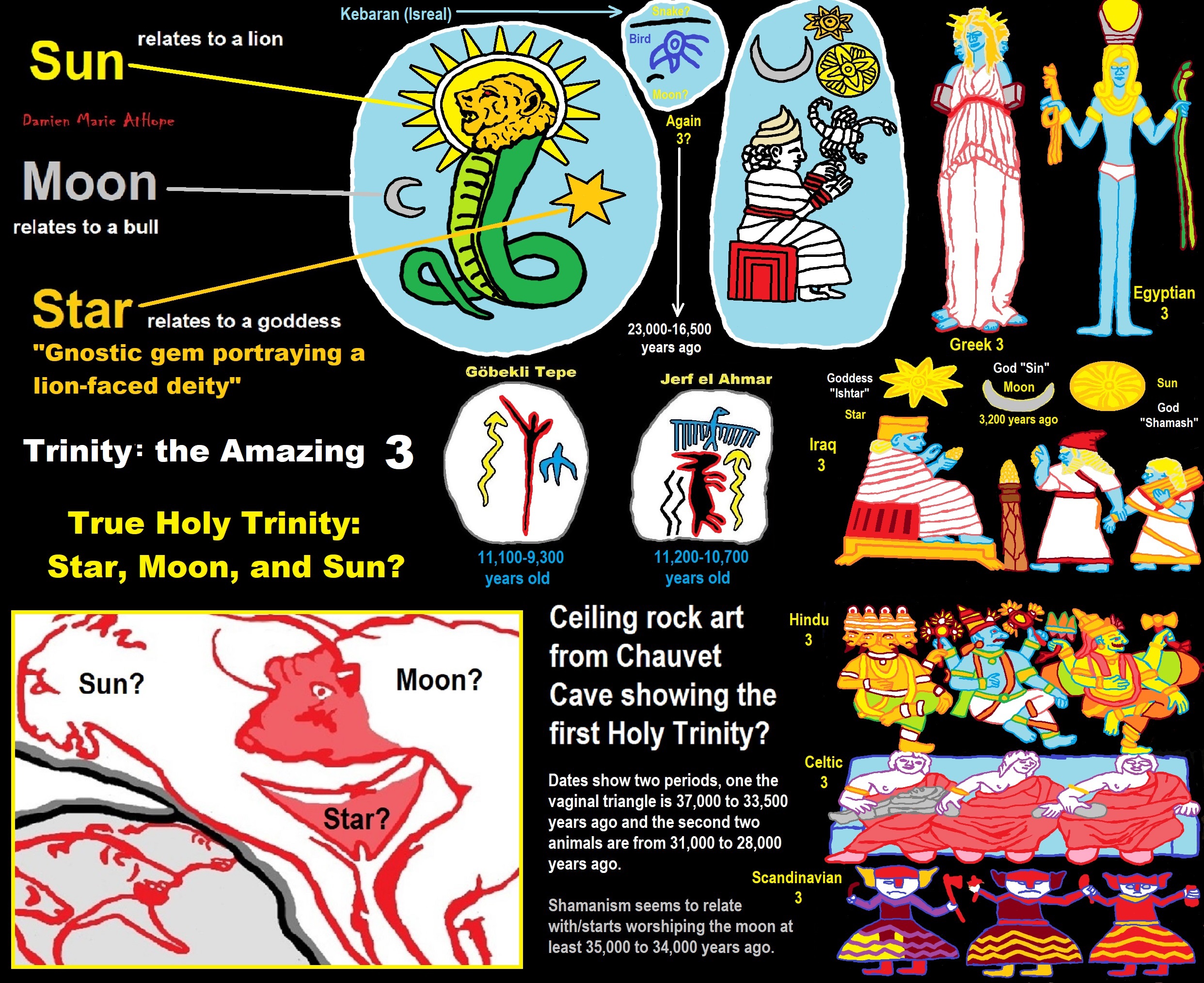



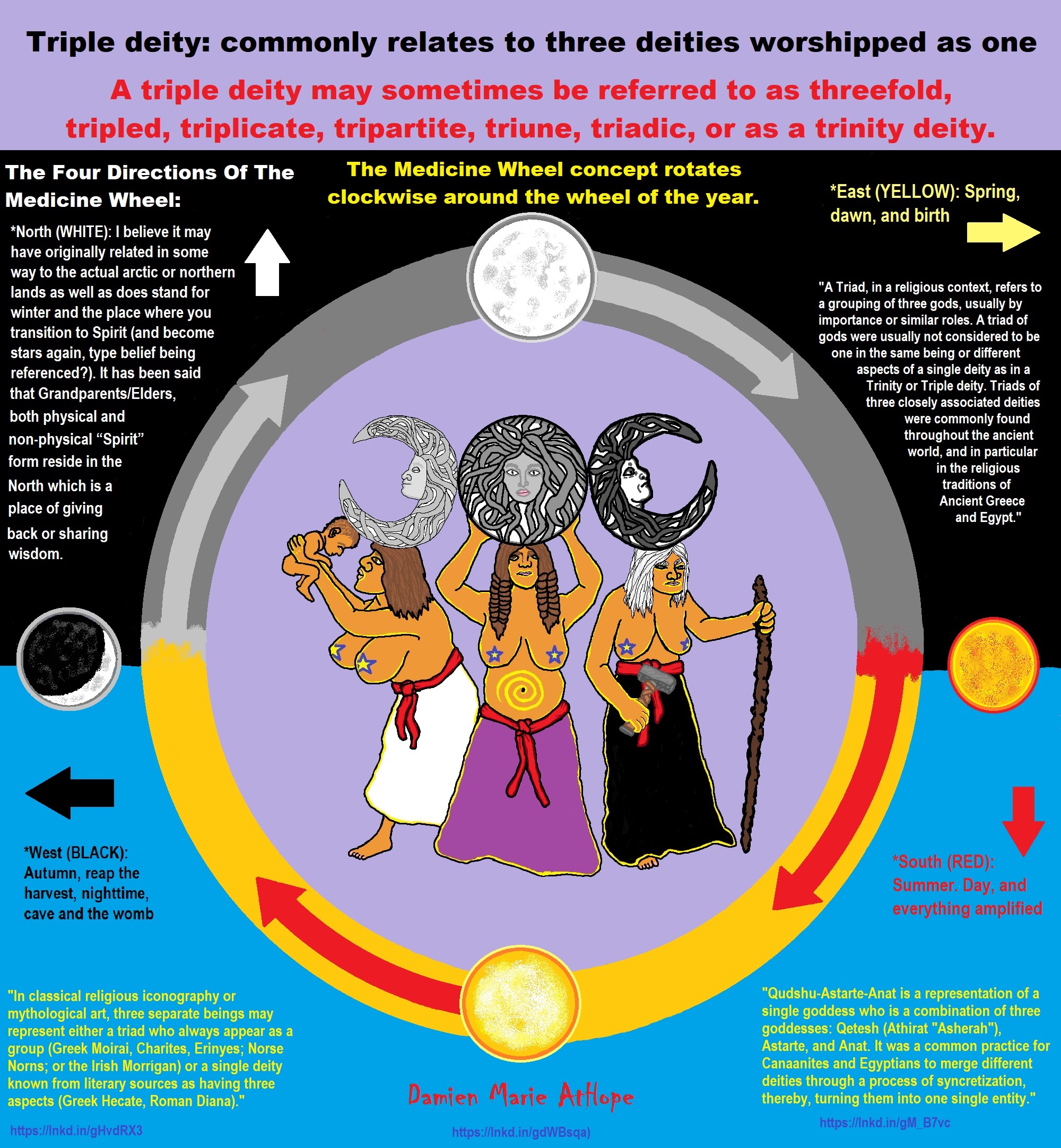
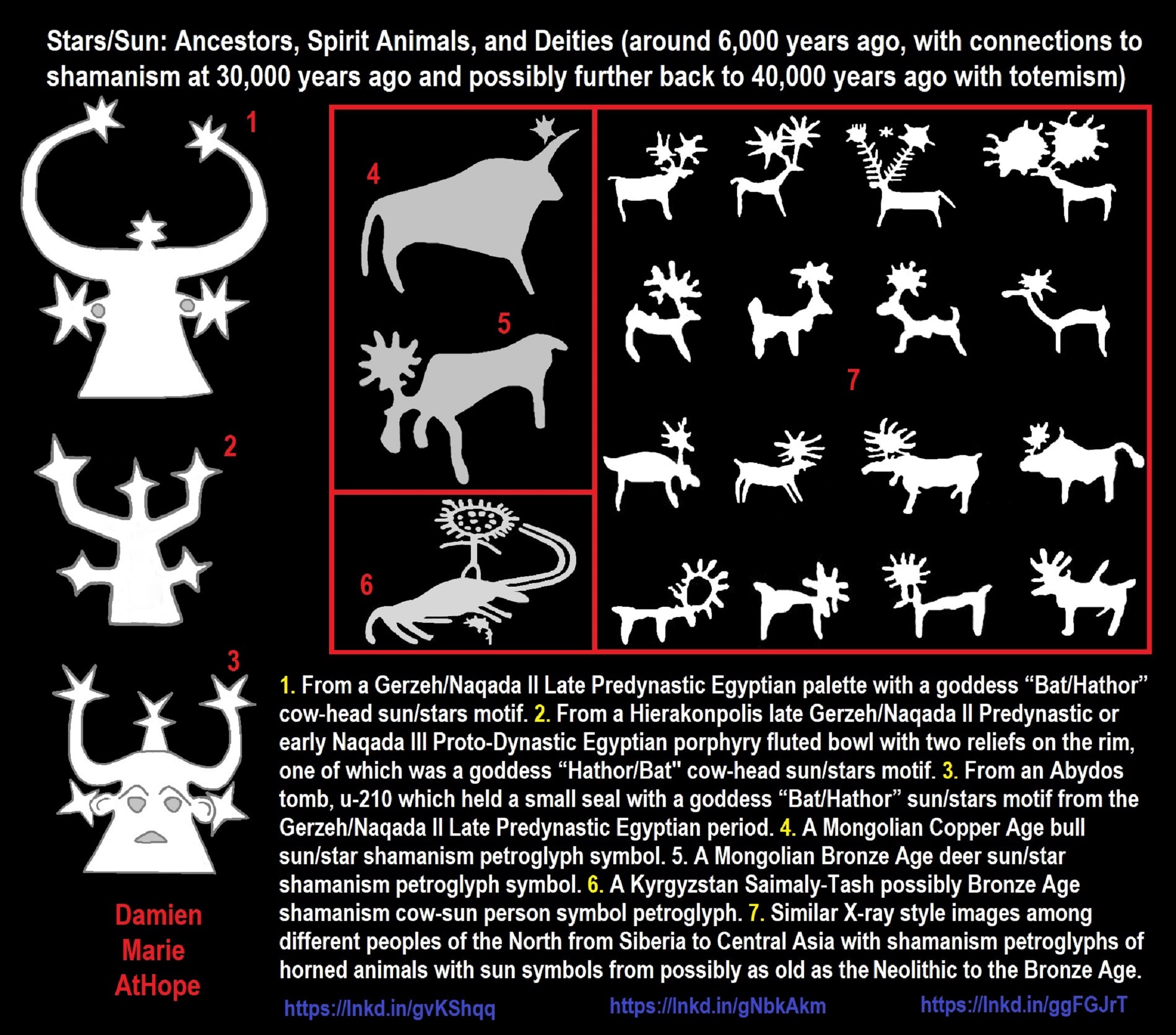
- From a Gerzeh/Naqada II Late Predynastic Egyptian palette with a goddess “Bat/Hathor” cow-head sun/stars motif.
- From a Hierakonpolis late Gerzeh/Naqada II Predynastic or early Naqada III Proto-Dynastic Egyptian porphyry fluted bowl with two reliefs on the rim, one of which was a goddess “Hathor/Bat” cow-head sun/stars motif.
- From an Abydos tomb, u-210 which held a small seal with a goddess “Bat/Hathor” sun/stars motif from the Gerzeh/Naqada II Late Predynastic Egyptian period.
- A Mongolian Copper Age bull sun/star shamanism petroglyph
- A Mongolian Bronze Age deer sun/star shamanism petroglyph symbol.
- A Kyrgyzstan Saimaly-Tash possibly Bronze Age shamanism cow-sun person symbol petroglyph.
- Similar X-ray style images among different peoples of the North from Siberia to Central Asia with shamanism petroglyphs of horned animals with sun symbols from possibly as old as the Neolithic to the Bronze Age. ref, ref, ref
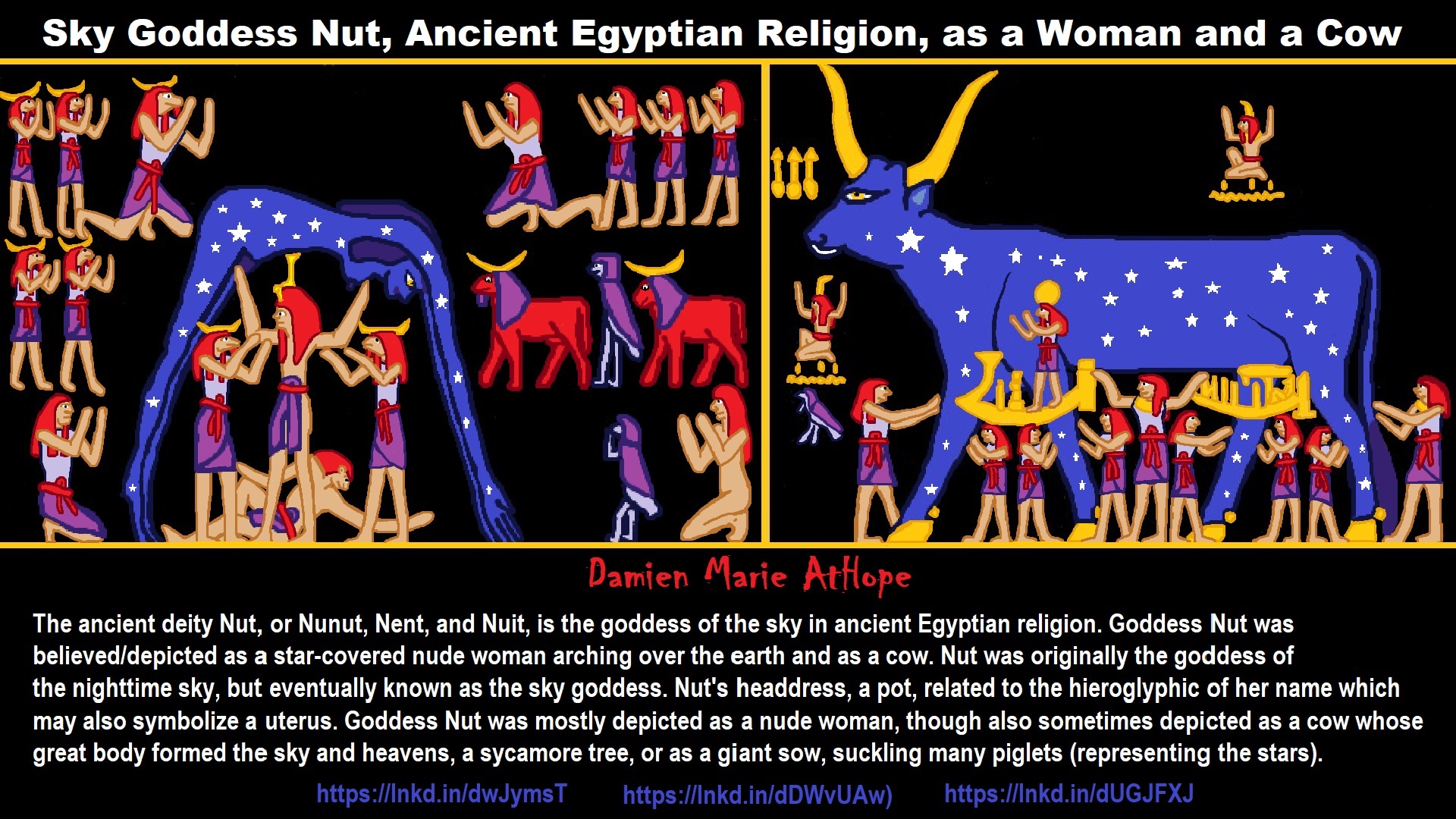


ref, ref, ref, ref, ref, ref, ref, ref, ref
Symbolism: Star of the Sumerian Goddesses Ishtar/Inanna and the Star/Sun-symbol of the Mesopotamian God Shamash as well as Gilgamesh Slaying the Bull of Heaven for Ishtar
- The “Burney Relief,” believed to represent either Ishtar or her older sister Ereshkigal (1900 or 1800 BCE)
- Babylonian relief of Ishtar from Eshnunna (early second millennium BCE)
- Akkadian cylinder seal depicting Inanna resting her foot on the back of a lion (2334 – 2154 BCE)
- Depiction of Inanna/Ishtar from the Ishtar Vase (early second millennium BCE)
- Ishtar on the Anubanini rock relief (2300-2000 BCE)
- The Star of the Sumerian goddess Inanna was her symbol and that of her East Semitic counterpart goddess Ishtar. Because Ishtar was associated with the planet Venus, the star is also known as the Star of Venus.
- From a plaque from the Sumerian temple of Inanna plaque at Nippur (2500 BCE)
- Akkadian cylinder seal with the deities Inanna, Utu, Enki, and Isimud (2300 BCE)
- 1125-1100 BCE Kudurru stone document boundary stone with an Ishtar/Inanna star as part of a sky triad shown left to right along with the god Sin crescent moon symbol and Shamash star/sun symbol.
- The star of Inanna-Ishtar alongside the star/solar disk of her brother Shamash (Sumerian Utu) and the crescent moon of her father Sin (Sumerian Nanna) on a boundary stone of Meli-Shipak II (1200 BCE)
- Star of Ishtar and Shamash
- Assyrian Democratic Movement Brand Identity (Logo)
- Star of Shamash
- Mesopotamian relief of Gilgamesh slaying the Bull of Heaven, having been sent by Ishtar in Tablet VI of the Epic of Gilgamesh after he spurns her amorous advances.
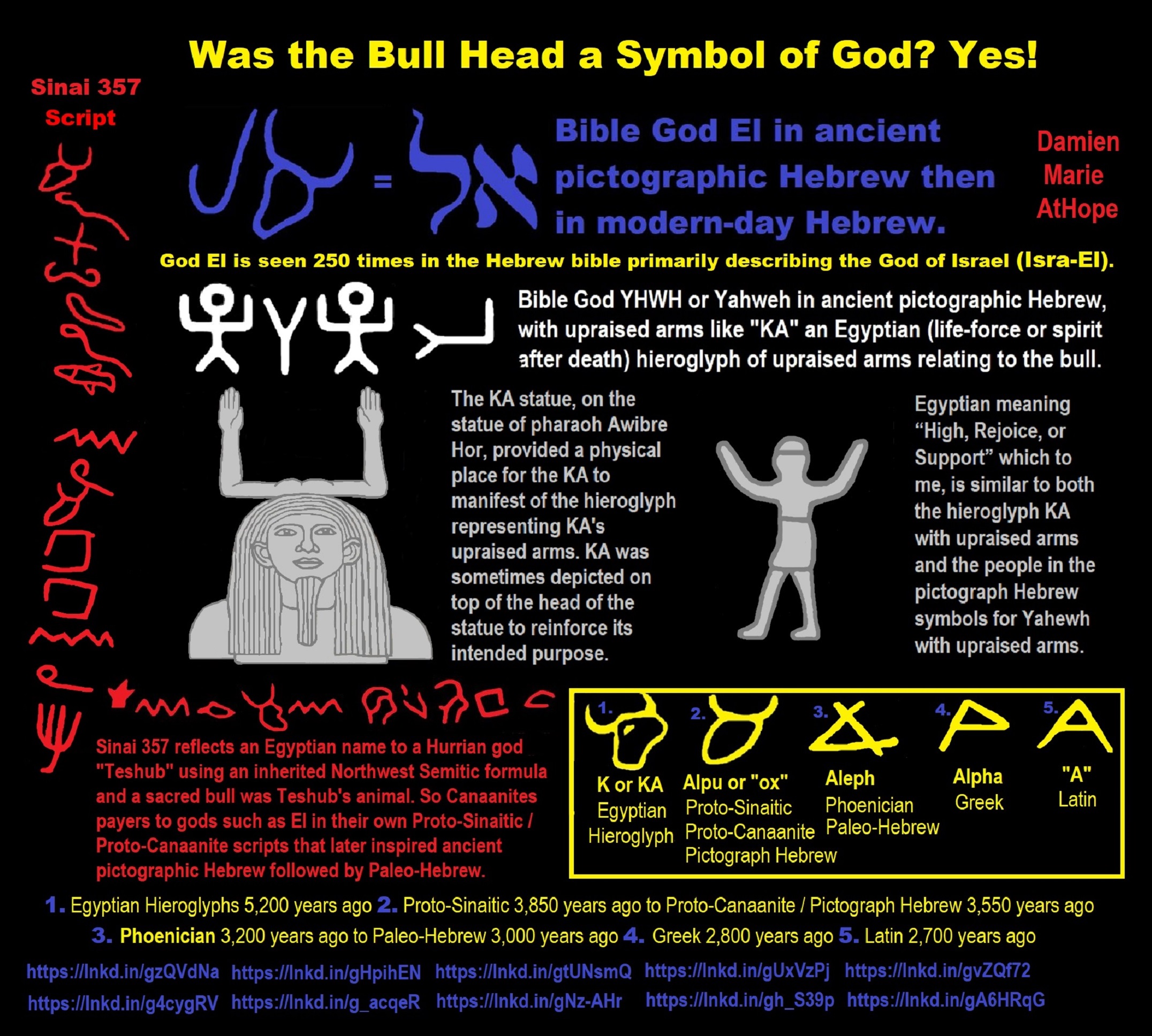
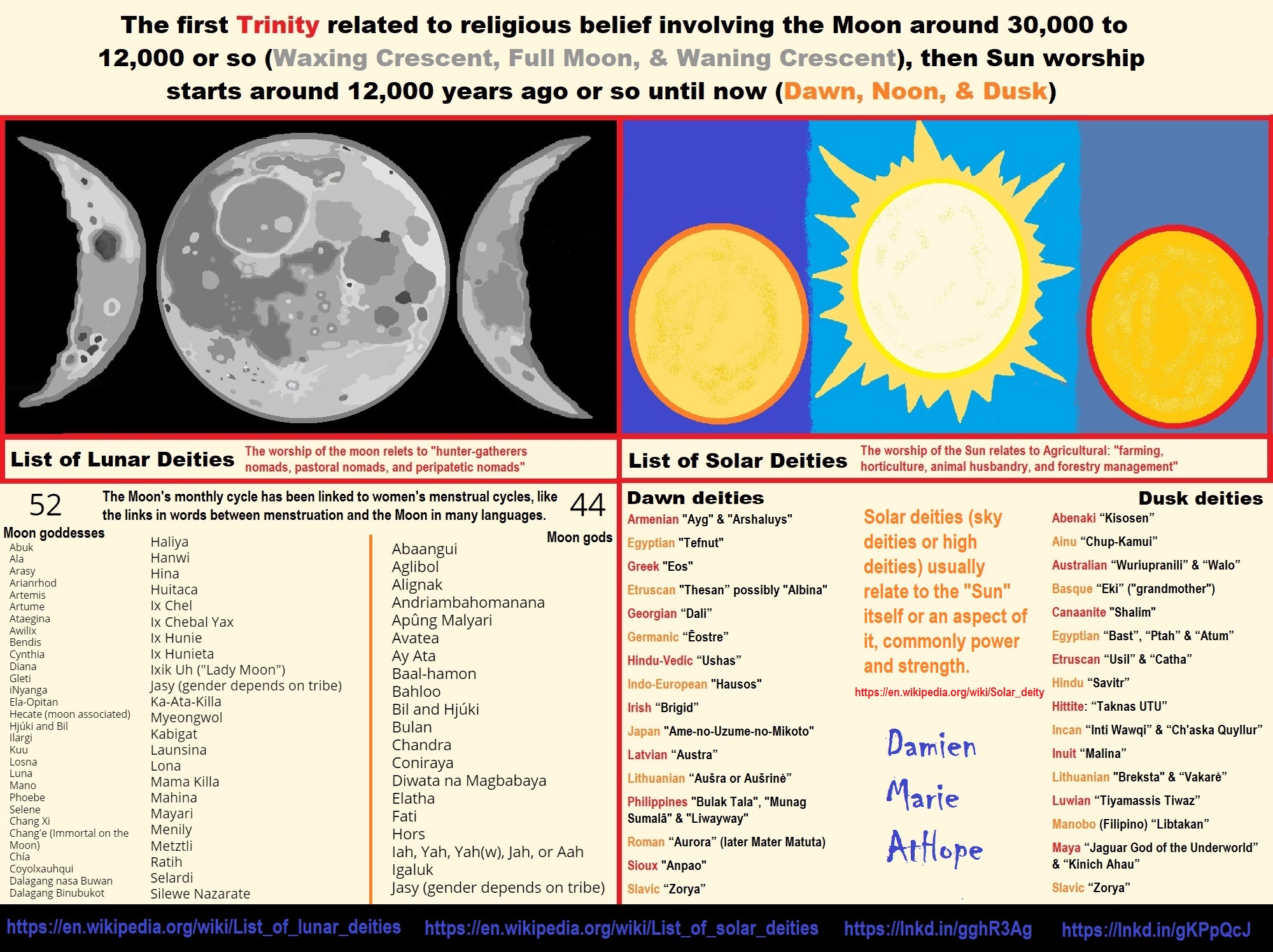
ref, ref, ref, ref, ref, ref, ref
List of Lunar Deities
“In mythology, a lunar deity is a god or goddess of the Moon, sometimes as a personification. These deities can have a variety of functions and traditions depending upon the culture, but they are often related. Some forms of moon worship can be found in most ancient religions. The Moon features prominently in art and literature, often with a purported influence in human affairs. Many cultures are oriented chronologically by the Moon, as opposed to the Sun. The Hindu calendar maintains the integrity of the lunar month and the moon god Chandra has religious significance during many Hindu festivals (e.g. Karwa Chauth, Sankashti Chaturthi, and during eclipses). The ancient Germanic tribes were also known to have a lunar calendar.” ref
“Many cultures have implicitly linked the 29.5-day lunar cycle to women’s menstrual cycles, as evident in the shared linguistic roots of “menstruation” and “moon” words in multiple language families. This identification was not universal, as demonstrated by the fact that not all moon deities are female. Still, many well-known mythologies feature moon goddesses, including the Greek goddess Selene, the Roman goddess Luna, and the Chinese goddess Chang’e. Several goddesses including Artemis, Hecate, and Isis did not originally have lunar aspects, and only acquired them late in antiquity due to syncretism with the de facto Greco-Roman lunar deity Selene/Luna. In traditions with male gods, there is little evidence of such syncretism, though the Greek Hermes has been equated with the male Egyptian lunar god Thoth.” ref
“Male lunar gods are also common, such as Sin of the Mesopotamians, Mani of the Germanic tribes, Tsukuyomi of the Japanese, Igaluk/Alignak of the Inuit, and the Hindu god Chandra. The original Proto-Indo-European lunar deity appears to have been male, with many possible derivatives including the Homeric figure of Menelaus. Cultures with male moon gods often feature sun goddesses. An exception is Hinduism, featuring both male and female aspects of the solar divine. The ancient Egyptians had several moon gods including Khonsu and Thoth, although Thoth is a considerably more complex deity. Set represented the moon in the Egyptian Calendar of Lucky and Unlucky Days.” ref
List of Solar Deities
“A solar deity is a god or goddess who represents the Sun, or an aspect of it, usually by its perceived power and strength. Solar deities and Sun worship can be found throughout most of recorded history in various forms. The following is a list of solar deities. A dawn god or goddess is a deity in a polytheistic religious tradition who is in some sense associated with the dawn. These deities show some relation with the morning, the beginning of the day, and, in some cases, become syncretized with similar solar deities.” ref, ref
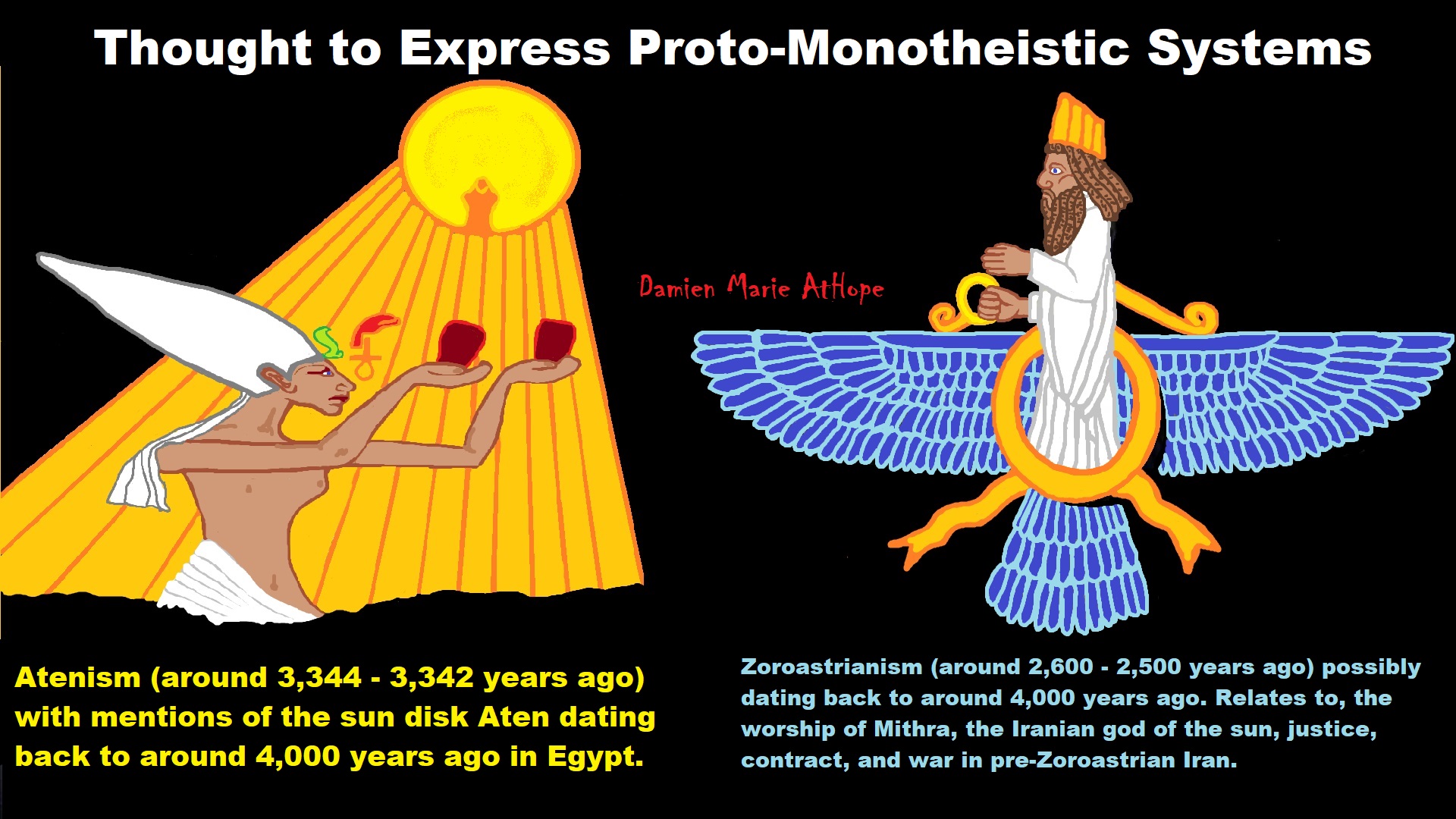

People don’t commonly teach religious history, even that of their own claimed religion. No, rather they teach a limited “pro their religion” history of their religion from a religious perspective favorable to the religion of choice.

Do you truly think “Religious Belief” is only a matter of some personal choice?
Do you not see how coercive one’s world of choice is limited to the obvious hereditary belief, in most religious choices available to the child of religious parents or caregivers? Religion is more commonly like a family, culture, society, etc. available belief that limits the belief choices of the child and that is when “Religious Belief” is not only a matter of some personal choice and when it becomes hereditary faith, not because of the quality of its alleged facts or proposed truths but because everyone else important to the child believes similarly so they do as well simply mimicking authority beliefs handed to them. Because children are raised in religion rather than being presented all possible choices but rather one limited dogmatic brand of “Religious Belief” where children only have a choice of following the belief as instructed, and then personally claim the faith hereditary belief seen in the confirming to the belief they have held themselves all their lives. This is obvious in statements asked and answered by children claiming a faith they barely understand but they do understand that their family believes “this or that” faith, so they feel obligated to believe it too. While I do agree that “Religious Belief” should only be a matter of some personal choice, it rarely is… End Hereditary Religion!
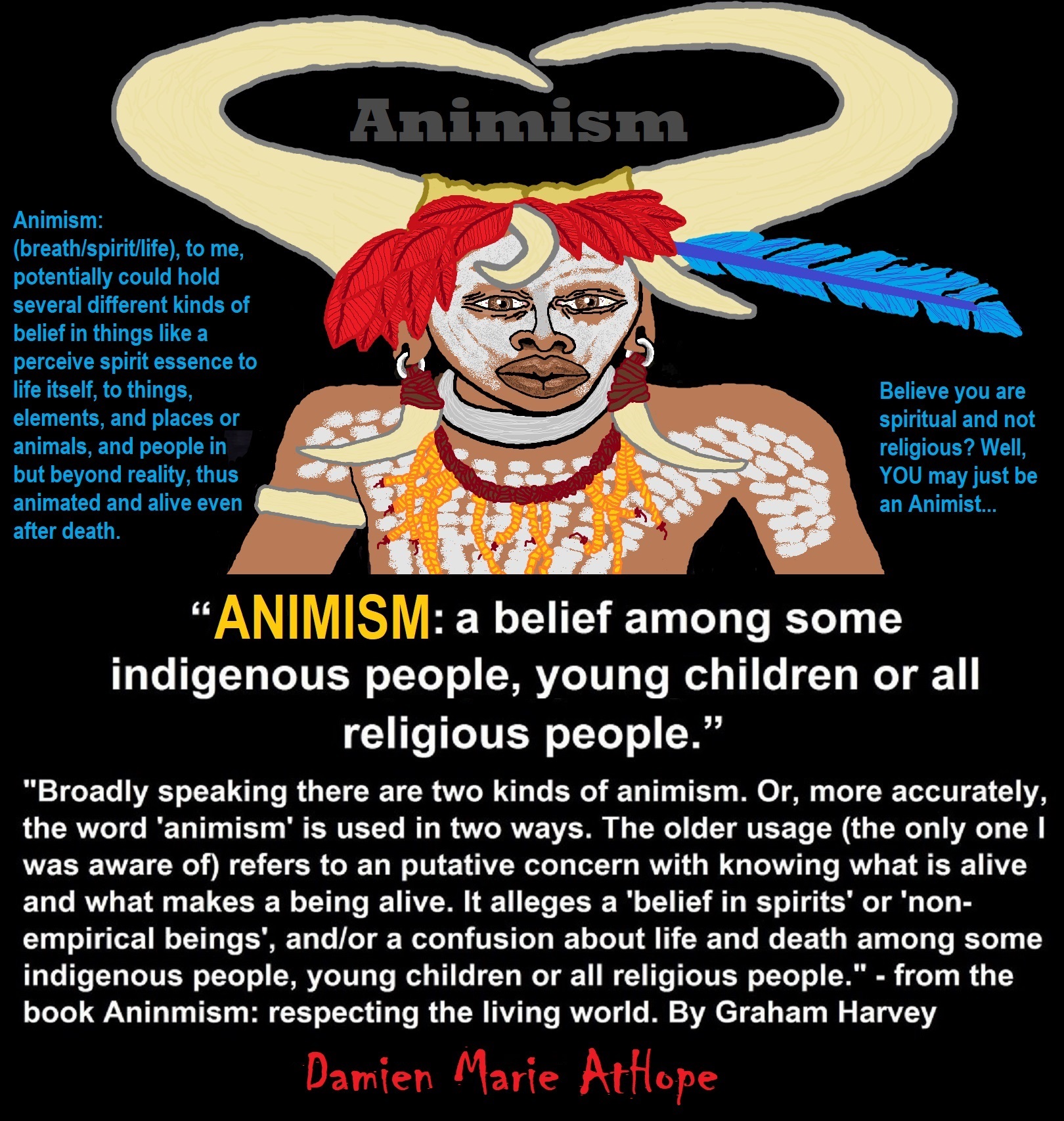
Animism: Respecting the Living World by Graham Harvey
“How have human cultures engaged with and thought about animals, plants, rocks, clouds, and other elements in their natural surroundings? Do animals and other natural objects have a spirit or soul? What is their relationship to humans? In this new study, Graham Harvey explores current and past animistic beliefs and practices of Native Americans, Maori, Aboriginal Australians, and eco-pagans. He considers the varieties of animism found in these cultures as well as their shared desire to live respectfully within larger natural communities. Drawing on his extensive casework, Harvey also considers the linguistic, performative, ecological, and activist implications of these different animisms.” ref

We are like believing machines we vacuum up ideas, like Velcro sticks to almost everything. We accumulate beliefs that we allow to negatively influence our lives, often without realizing it. Our willingness must be to alter skewed beliefs that impend our balance or reason, which allows us to achieve new positive thinking and accurate outcomes.
My thoughts on Religion Evolution with external links for more info:
- (Pre-Animism Africa mainly, but also Europe, and Asia at least 300,000 years ago), (Pre-Animism – Oxford Dictionaries)
- (Animism Africa around 100,000 years ago), (Animism – Britannica.com)
- (Totemism Europe around 50,000 years ago), (Totemism – Anthropology)
- (Shamanism Siberia around 30,000 years ago), (Shamanism – Britannica.com)
- (Paganism Turkey around 12,000 years ago), (Paganism – BBC Religion)
- (Progressed Organized Religion “Institutional Religion” Egypt around 5,000 years ago), (Ancient Egyptian Religion – Britannica.com)
- (CURRENT “World” RELIGIONS after 4,000 years ago) (Origin of Major Religions – Sacred Texts)
- (Early Atheistic Doubting at least by 2,600 years ago) (History of Atheism – Wikipedia)
“Religion is an Evolved Product” and Yes, Religion is Like Fear Given Wings…
Atheists talk about gods and religions for the same reason doctors talk about cancer, they are looking for a cure, or a firefighter talks about fires because they burn people and they care to stop them. We atheists too often feel a need to help the victims of mental slavery, held in the bondage that is the false beliefs of gods and the conspiracy theories of reality found in religions.
Understanding Religion Evolution:
- Pre-Animism (at least 300,000 years ago)
- Animism (Africa: 100,000 years ago)
- Totemism (Europe: 50,000 years ago)
- Shamanism (Siberia: 30,000 years ago)
- Paganism (Turkey: 12,000 years ago)
- Progressed organized religion (Egypt: 5,000 years ago), (Egypt, the First Dynasty 5,150 years ago)
- CURRENT “World” RELIGIONS (after 4,000 years ago)
- Early Atheistic Doubting (at least by 2,600 years ago)
“An Archaeological/Anthropological Understanding of Religion Evolution”
It seems ancient peoples had to survived amazing threats in a “dangerous universe (by superstition perceived as good and evil),” and human “immorality or imperfection of the soul” which was thought to affect the still living, leading to ancestor worship. This ancestor worship presumably led to the belief in supernatural beings, and then some of these were turned into the belief in gods. This feeble myth called gods were just a human conceived “made from nothing into something over and over, changing, again and again, taking on more as they evolve, all the while they are thought to be special,” but it is just supernatural animistic spirit-belief perceived as sacred.
Quick Evolution of Religion?
Pre-Animism (at least 300,000 years ago) pre-religion is a beginning that evolves into later Animism. So, Religion as we think of it, to me, all starts in a general way with Animism (Africa: 100,000 years ago) (theoretical belief in supernatural powers/spirits), then this is physically expressed in or with Totemism (Europe: 50,000 years ago) (theoretical belief in mythical relationship with powers/spirits through a totem item), which then enlists a full-time specific person to do this worship and believed interacting Shamanism (Siberia/Russia: 30,000 years ago) (theoretical belief in access and influence with spirits through ritual), and then there is the further employment of myths and gods added to all the above giving you Paganism (Turkey: 12,000 years ago) (often a lot more nature-based than most current top world religions, thus hinting to their close link to more ancient religious thinking it stems from). My hypothesis is expressed with an explanation of the building of a theatrical house (modern religions development). Progressed organized religion (Egypt: 5,000 years ago) with CURRENT “World” RELIGIONS (after 4,000 years ago).
Historically, in large city-state societies (such as Egypt or Iraq) starting around 5,000 years ago culminated to make religion something kind of new, a sociocultural-governmental-religious monarchy, where all or at least many of the people of such large city-state societies seem familiar with and committed to the existence of “religion” as the integrated life identity package of control dynamics with a fixed closed magical doctrine, but this juggernaut integrated religion identity package of Dogmatic-Propaganda certainly did not exist or if developed to an extent it was highly limited in most smaller prehistoric societies as they seem to lack most of the strong control dynamics with a fixed closed magical doctrine (magical beliefs could be at times be added or removed). Many people just want to see developed religious dynamics everywhere even if it is not. Instead, all that is found is largely fragments until the domestication of religion.
Religions, as we think of them today, are a new fad, even if they go back to around 6,000 years in the timeline of human existence, this amounts to almost nothing when seen in the long slow evolution of religion at least around 70,000 years ago with one of the oldest ritual worship. Stone Snake of South Africa: “first human worship” 70,000 years ago. This message of how religion and gods among them are clearly a man-made thing that was developed slowly as it was invented and then implemented peace by peace discrediting them all. Which seems to be a simple point some are just not grasping how devastating to any claims of truth when we can see the lie clearly in the archeological sites.
I wish people fought as hard for the actual values as they fight for the group/clan names political or otherwise they think support values. Every amount spent on war is theft to children in need of food or the homeless kept from shelter.
Here are several of my blog posts on history:
- To Find Truth You Must First Look
- (Magdalenian/Iberomaurusian) Connections to the First Paganists of the early Neolithic Near East Dating from around 17,000 to 12,000 Years Ago
- Natufians: an Ancient People at the Origins of Agriculture and Sedentary Life
- Possible Clan Leader/Special “MALE” Ancestor Totem Poles At Least 13,500 years ago?
- Jewish People with DNA at least 13,200 years old, Judaism, and the Origins of Some of its Ideas
- Baltic Reindeer Hunters: Swiderian, Lyngby, Ahrensburgian, and Krasnosillya cultures 12,020 to 11,020 years ago are evidence of powerful migratory waves during the last 13,000 years and a genetic link to Saami and the Finno-Ugric peoples.
- The Rise of Inequality: patriarchy and state hierarchy inequality
- Fertile Crescent 12,500 – 9,500 Years Ago: fertility and death cult belief system?
- 12,400 – 11,700 Years Ago – Kortik Tepe (Turkey) Pre/early-Agriculture Cultic Ritualism
- Ritualistic Bird Symbolism at Gobekli Tepe and its “Ancestor Cult”
- Male-Homosexual (female-like) / Trans-woman (female) Seated Figurine from Gobekli Tepe
- Could a 12,000-year-old Bull Geoglyph at Göbekli Tepe relate to older Bull and Female Art 25,000 years ago and Later Goddess and the Bull cults like Catal Huyuk?
- Sedentism and the Creation of goddesses around 12,000 years ago as well as male gods after 7,000 years ago.
- Alcohol, where Agriculture and Religion Become one? Such as Gobekli Tepe’s Ritualistic use of Grain as Food and Ritual Drink
- Neolithic Ritual Sites with T-Pillars and other Cultic Pillars
- Paganism: Goddesses around 12,000 years ago then Male Gods after 7,000 years ago
- First Patriarchy: Split of Women’s Status around 12,000 years ago & First Hierarchy: fall of Women’s Status around 5,000 years ago.
- Natufians: an Ancient People at the Origins of Agriculture and Sedentary Life
- J DNA and the Spread of Agricultural Religion (paganism)
- Paganism: an approximately 12,000-year-old belief system
- Paganism 12,000 years old: related to “Anarchism and Socialism” (Pre-Capitalism)
- Shaman burial in Israel 12,000 years ago and the Shamanism Phenomena
- Need to Mythicized: gods and goddesses
- 12,000 – 7,000 Years Ago – Paleo-Indian Culture (The Americas)
- 12,000 – 2,000 Years Ago – Indigenous-Scandinavians (Nordic)
- Norse did not wear helmets with horns?
- Pre-Pottery Neolithic Skull Cult around 11,500 to 8,400 Years Ago?
- 10,400 – 10,100 Years Ago, in Turkey the Nevail Cori Religious Settlement
- 9,000-6,500 Years Old Submerged Pre-Pottery/Pottery Neolithic Ritual Settlements off Israel’s Coast
- Catal Huyuk “first religious designed city” around 9,500 to 7,700 years ago (Turkey)
- Cultic Hunting at Catal Huyuk “first religious designed city”
- Special Items and Art as well as Special Elite Burials at Catal Huyuk
- New Rituals and Violence with the appearance of Pottery and People?
- Haplogroup N and its related Uralic Languages and Cultures
- Ainu people, Sámi people, Native Americans, the Ancient North Eurasians, and Paganistic-Shamanism with Totemism
- Ideas, Technology and People from Turkey, Europe, to China and Back again 9,000 to 5,000 years ago?
- First Pottery of Europe and the Related Cultures
- 9,000 years old Neolithic Artifacts Judean Desert and Hills Israel
- 9,000-7,000 years-old Sex and Death Rituals: Cult Sites in Israel, Jordan, and the Sinai
- 9,000-8500 year old Horned Female shaman Bad Dürrenberg Germany
- Neolithic Jewelry and the Spread of Farming in Europe Emerging out of West Turkey
- 8,600-year-old Tortoise Shells in Neolithic graves in central China have Early Writing and Shamanism
- Swing of the Mace: the rise of Elite, Forced Authority, and Inequality begin to Emerge 8,500 years ago?
- Migrations and Changing Europeans Beginning around 8,000 Years Ago
- My “Steppe-Anatolian-Kurgan hypothesis” 8,000/7,000 years ago
- Around 8,000-year-old Shared Idea of the Mistress of Animals, “Ritual” Motif
- Pre-Columbian Red-Paint (red ochre) Maritime Archaic Culture 8,000-3,000 years ago
- 7,522-6,522 years ago Linear Pottery culture which I think relates to Arcane Capitalism’s origins
- Arcane Capitalism: Primitive socialism, Primitive capital, Private ownership, Means of production, Market capitalism, Class discrimination, and Petite bourgeoisie (smaller capitalists)
- 7,500-4,750 years old Ritualistic Cucuteni-Trypillian culture of Moldova, Romania, and Ukraine
- Roots of a changing early society 7,200-6,700 years ago Jordan and Israel
- Agriculture religion (Paganism) with farming reached Britain between about 7,000 to 6,500 or so years ago and seemingly expressed in things like Western Europe’s Long Barrows
- My Thoughts on Possible Migrations of “R” DNA and Proto-Indo-European?
- “Millet” Spreading from China 7,022 years ago to Europe and related Language may have Spread with it leading to Proto-Indo-European
- Proto-Indo-European (PIE), ancestor of Indo-European languages: DNA, Society, Language, and Mythology
- The Dnieper–Donets culture and Asian varieties of Millet from China to the Black Sea region of Europe by 7,022 years ago
- Kurgan 6,000 years ago/dolmens 7,000 years ago: funeral, ritual, and other?
- 7,020 to 6,020-year-old Proto-Indo-European Homeland of Urheimat or proposed home of their Language and Religion
- Ancient Megaliths: Kurgan, Ziggurat, Pyramid, Menhir, Trilithon, Dolman, Kromlech, and Kromlech of Trilithons
- The Mytheme of Ancient North Eurasian Sacred-Dog belief and similar motifs are found in Indo-European, Native American, and Siberian comparative mythology
- Elite Power Accumulation: Ancient Trade, Tokens, Writing, Wealth, Merchants, and Priest-Kings
- Sacred Mounds, Mountains, Kurgans, and Pyramids may hold deep connections?
- Between 7,000-5,000 Years ago, rise of unequal hierarchy elite, leading to a “birth of the State” or worship of power, strong new sexism, oppression of non-elites, and the fall of Women’s equal status
- Paganism 7,000-5,000 years old: related to “Anarchism and Socialism” (Capitalism) (World War 0) Elite & their slaves
- Hell and Underworld mythologies starting maybe as far back as 7,000 to 5,000 years ago with the Proto-Indo-Europeans?
- The First Expression of the Male God around 7,000 years ago?
- White (light complexion skin) Bigotry and Sexism started 7,000 years ago?
- Around 7,000-year-old Shared Idea of the Divine Bird (Tutelary and/or Trickster spirit/deity), “Ritual” Motif
- Nekhbet an Ancient Egyptian Vulture Goddess and Tutelary Deity
- 6,720 to 4,920 years old Ritualistic Hongshan Culture of Inner Mongolia with 5,000-year-old Pyramid Mounds and Temples
- First proto-king in the Balkans, Varna culture around 6,500 years ago?
- 6,500–5,800 years ago in Israel Late Chalcolithic (Copper Age) Period in the Southern Levant Seems to Express Northern Levant Migrations, Cultural and Religious Transfer
- KING OF BEASTS: Master of Animals “Ritual” Motif, around 6,000 years old or older…
- Around 6000-year-old Shared Idea of the Solid Wheel & the Spoked Wheel-Shaped Ritual Motif
- “The Ghassulian Star,” a mysterious 6,000-year-old mural from Jordan; a Proto-Star of Ishtar, Star of Inanna or Star of Venus?
- Religious/Ritual Ideas, including goddesses and gods as well as ritual mounds or pyramids from Northeastern Asia at least 6,000 years old, seemingly filtering to Iran, Iraq, the Mediterranean, Europe, Egypt, and the Americas?
- Maykop (5,720–5,020 years ago) Caucasus region Bronze Age culture-related to Copper Age farmers from the south, influenced by the Ubaid period and Leyla-Tepe culture, as well as influencing the Kura-Araxes culture
- 5-600-year-old Tomb, Mummy, and First Bearded Male Figurine in a Grave
- Kura-Araxes Cultural 5,520 to 4,470 years old DNA traces to the Canaanites, Arabs, and Jews
- Minoan/Cretan (Keftiu) Civilization and Religion around 5,520 to 3,120 years ago
- Evolution Of Science at least by 5,500 years ago
- 5,500 Years old birth of the State, the rise of Hierarchy, and the fall of Women’s status
- “Jiroft culture” 5,100 – 4,200 years ago and the History of Iran
- Stonehenge: Paganistic Burial and Astrological Ritual Complex, England (5,100-3,600 years ago)
- Around 5,000-year-old Shared Idea of the “Tree of Life” Ritual Motif
- Complex rituals for elite, seen from China to Egypt, at least by 5,000 years ago
- Around 5,000 years ago: “Birth of the State” where Religion gets Military Power and Influence
- The Center of the World “Axis Mundi” and/or “Sacred Mountains” Mythology Could Relate to the Altai Mountains, Heart of the Steppe
- Progressed organized religion starts, an approximately 5,000-year-old belief system
- China’s Civilization between 5,000-3,000 years ago, was a time of war and class struggle, violent transition from free clans to a Slave or Elite society
- Origin of Logics is Naturalistic Observation at least by around 5,000 years ago.
- Paganism 5,000 years old: progressed organized religion and the state: related to “Anarchism and Socialism” (Kings and the Rise of the State)
- Ziggurats (multi-platform temples: 4,900 years old) to Pyramids (multi-platform tombs: 4,700 years old)
- Did a 4,520–4,420-year-old Volcano In Turkey Inspire the Bible God?
- Finland’s Horned Shaman and Pre-Horned-God at least 4,500 years ago?
- 4,000-year-Old Dolmens in Israel: A Connected Dolmen Religious Phenomenon?
- Creation myths: From chaos, Ex nihilo, Earth-diver, Emergence, World egg, and World parent
- Bronze Age “Ritual” connections of the Bell Beaker culture with the Corded Ware/Single Grave culture, which were related to the Yamnaya culture and Proto-Indo-European Languages/Religions
- Low Gods (Earth/ Tutelary deity), High Gods (Sky/Supreme deity), and Moralistic Gods (Deity enforcement/divine order)
- The exchange of people, ideas, and material-culture including, to me, the new god (Sky Father) and goddess (Earth Mother) religion between the Cucuteni-Trypillians and others which is then spread far and wide
- Koryaks: Indigenous People of the Russian Far East and Big Raven myths also found in Tlingit, Haida, Tsimshian, and other Indigenous People of North America
- 42 Principles Of Maat (Egyptian Goddess of the justice) around 4,400 years ago, 2000 Years Before Ten Commandments
- “Happy Easter” Well Happy Eostre/Ishter
- 4,320-3,820 years old “Shimao” (North China) site with Totemistic-Shamanistic Paganism and a Stepped Pyramid
- 4,250 to 3,400 Year old Stonehenge from Russia: Arkaim?
- 4,100-year-old beaker with medicinal & flowering plants in a grave of a woman in Scotland
- Early European Farmer ancestry, Kelif el Boroud people with the Cardial Ware culture, and the Bell Beaker culture Paganists too, spread into North Africa, then to the Canary Islands off West Africa
- Flood Accounts: Gilgamesh epic (4,100 years ago) Noah in Genesis (2,600 years ago)
- Paganism 4,000 years old: related to “Anarchism and Socialism” (First Moralistic gods, then the Origin time of Monotheism)
- When was the beginning: TIMELINE OF CURRENT RELIGIONS, which start around 4,000 years ago.
- Early Religions Thought to Express Proto-Monotheistic Systems around 4,000 years ago
- Kultepe? An archaeological site with a 4,000 years old women’s rights document.
- Single God Religions (Monotheism) = “Man-o-theism” started around 4,000 years ago with the Great Sky Spirit/God Tiān (天)?
- Confucianism’s Tiān (Shangdi god 4,000 years old): Supernaturalism, Pantheism or Theism?
- Yes, Your Male God is Ridiculous
- Mythology, a Lunar Deity is a Goddess or God of the Moon
- Sacred Land, Hills, and Mountains: Sami Mythology (Paganistic Shamanism)
- Horse Worship/Sacrifice: mythical union of Ruling Elite/Kingship and the Horse
- The Amorite/Amurru people’s God Amurru “Lord of the Steppe”, relates to the Origins of the Bible God?
- Bronze Age Exotic Trade Routes Spread Quite Far as well as Spread Religious Ideas with Them
- Sami and the Northern Indigenous Peoples Landscape, Language, and its Connection to Religion
- Prototype of Ancient Analemmatic Sundials around 3,900-3,150 years ago and a Possible Solar Connection to gods?
- Judaism is around 3,450 or 3,250 years old. (“Paleo-Hebrew” 3,000 years ago and Torah 2,500 years ago)
- The Weakening of Ancient Trade and the Strengthening of Religions around 3000 years ago?
- Are you aware that there are religions that worship women gods, explain now religion tears women down?
- Animistic, Totemistic, and Paganistic Superstition Origins of bible god and the bible’s Religion.
- Myths and Folklore: “Trickster gods and goddesses”
- Jews, Judaism, and the Origins of Some of its Ideas
- An Old Branch of Religion Still Giving Fruit: Sacred Trees
- Dating the BIBLE: naming names and telling times (written less than 3,000 years ago, provable to 2,200 years ago)
- Did a Volcano Inspire the bible god?
- Dené–Yeniseian language, Old Copper Complex, and Pre-Columbian Mound Builders?
- No “dinosaurs and humans didn’t exist together just because some think they are in the bible itself”
- Sacred Shit and Sacred Animals?
- Everyone Killed in the Bible Flood? “Nephilim” (giants)?
- Hey, Damien dude, I have a question for you regarding “the bible” Exodus.
- Archaeology Disproves the Bible
- Bible Battle, Just More, Bible Babble
- The Jericho Conquest lie?
- Canaanites and Israelites?
- Accurate Account on how did Christianity Began?
- Let’s talk about Christianity.
- So the 10 commandments isn’t anything to go by either right?
- Misinformed christian
- Debunking Jesus?
- Paulism vs Jesus
- Ok, you seem confused so let’s talk about Buddhism.
- Unacknowledged Buddhism: Gods, Savior, Demons, Rebirth, Heavens, Hells, and Terrorism
- His Foolishness The Dalai Lama
- Yin and Yang is sexist with an ORIGIN around 2,300 years ago?
- I Believe Archaeology, not Myths & Why Not, as the Religious Myths Already Violate Reason!
- Archaeological, Scientific, & Philosophic evidence shows the god myth is man-made nonsense.
- Aquatic Ape Theory/Hypothesis? As Always, Just Pseudoscience.
- Ancient Aliens Conspiracy Theorists are Pseudohistorians
- The Pseudohistoric and Pseudoscientific claims about “Bakoni Ruins” of South Africa
- Why do people think Religion is much more than supernaturalism and superstitionism?
- Religion is an Evolved Product
- Was the Value of Ancient Women Different?
- 1000 to 1100 CE, human sacrifice Cahokia Mounds a pre-Columbian Native American site
- Feminist atheists as far back as the 1800s?
- Promoting Religion as Real is Mentally Harmful to a Flourishing Humanity
- Screw All Religions and Their Toxic lies, they are all fraud
- Forget Religions’ Unfounded Myths, I Have Substantiated “Archaeology Facts.”
- Religion Dispersal throughout the World
- I Hate Religion Just as I Hate all Pseudoscience
- Exposing Scientology, Eckankar, Wicca and Other Nonsense?
- Main deity or religious belief systems
- Quit Trying to Invent Your God From the Scraps of Science.
- Archaeological, Scientific, & Philosophic evidence shows the god myth is man-made nonsense.
- Ancient Alien Conspiracy Theorists: Misunderstanding, Rhetoric, Misinformation, Fabrications, and Lies
- Misinformation, Distortion, and Pseudoscience in Talking with a Christian Creationist
- Judging the Lack of Goodness in Gods, Even the Norse God Odin
- Challenging the Belief in God-like Aliens and Gods in General
- A Challenge to Christian use of Torture Devices?
- Yes, Hinduism is a Religion
- Trump is One of the Most Reactionary Forces of Far-right Christian Extremism
- Was the Bull Head a Symbol of God? Yes!
- Primate Death Rituals
- Christian – “God and Christianity are objectively true”
- Australopithecus afarensis Death Ritual?
- You Claim Global Warming is a Hoax?
- Doubter of Science and Defamer of Atheists?
- I think that sounds like the Bible?
- History of the Antifa (“anti-fascist”) Movements
- Indianapolis Anti-Blasphemy Laws #Free Soheil Rally
- Damien, you repeat the golden rule in so many forms then you say religion is dogmatic?
- Science is a Trustable Methodology whereas Faith is not Trustable at all!
- Was I ever a believer, before I was an atheist?
- Atheists rise in reason
- Mistrust of science?
- Open to Talking About the Definition of ‘God’? But first, we address Faith.
- ‘United Monarchy’ full of splendor and power – Saul, David, and Solomon? Most likely not.
- Is there EXODUS ARCHAEOLOGY? The short answer is “no.”
- Lacking Proof of Bigfoots, Unicorns, and Gods is Just a Lack of Research?
- Religion and Politics: Faith Beliefs vs. Rational Thinking
- Hammer of Truth that lying pig RELIGION: challenged by an archaeologist
- “The Hammer of Truth” -ontology question- What do You Mean by That?
- Navigation of a bad argument: Ad Hominem vs. Attack
- Why is it Often Claimed that Gods have a Gender?
- Why are basically all monotheistic religions ones that have a male god?
- Shifting through the Claims in support of Faith
- Dear Mr. AtHope, The 20th Century is an Indictment of Secularism and a Failed Atheist Century
- An Understanding of the Worldwide Statistics and Dynamics of Terrorist Incidents and Suicide Attacks
- Intoxication and Evolution? Addressing and Assessing the “Stoned Ape” or “Drunken Monkey” Theories as Catalysts in Human Evolution
- Sacred Menstrual cloth? Inanna’s knot, Isis knot, and maybe Ma’at’s feather?
- Damien, why don’t the Hebrews accept the bible stories?
- Dealing with a Troll and Arguing Over Word Meaning
- Knowledge without Belief? Justified beliefs or disbeliefs worthy of Knowledge?
- Afrocentrism and African Religions
- Crecganford @crecganford offers history & stories of the people, places, gods, & culture
- Empiricism-Denier?
I am not an academic. I am a revolutionary that teaches in public, in places like social media, and in the streets. I am not a leader by some title given but from my commanding leadership style of simply to start teaching everywhere to everyone, all manner of positive education.

ref, ref, ref, ref, ref, ref, ref, ref, ref, ref, ref, ref, ref, ref, ref, ref, ref, ref, ref, ref, ref
Low Gods “Earth” or Tutelary deity and High Gods “Sky” or Supreme deity
“An Earth goddess is a deification of the Earth. Earth goddesses are often associated with the “chthonic” deities of the underworld. Ki and Ninhursag are Mesopotamian earth goddesses. In Greek mythology, the Earth is personified as Gaia, corresponding to Roman Terra, Indic Prithvi/Bhūmi, etc. traced to an “Earth Mother” complementary to the “Sky Father” in Proto-Indo-European religion. Egyptian mythology exceptionally has a sky goddess and an Earth god.” ref
“A mother goddess is a goddess who represents or is a personification of nature, motherhood, fertility, creation, destruction or who embodies the bounty of the Earth. When equated with the Earth or the natural world, such goddesses are sometimes referred to as Mother Earth or as the Earth Mother. In some religious traditions or movements, Heavenly Mother (also referred to as Mother in Heaven or Sky Mother) is the wife or feminine counterpart of the Sky father or God the Father.” ref
“Any masculine sky god is often also king of the gods, taking the position of patriarch within a pantheon. Such king gods are collectively categorized as “sky father” deities, with a polarity between sky and earth often being expressed by pairing a “sky father” god with an “earth mother” goddess (pairings of a sky mother with an earth father are less frequent). A main sky goddess is often the queen of the gods and may be an air/sky goddess in her own right, though she usually has other functions as well with “sky” not being her main. In antiquity, several sky goddesses in ancient Egypt, Mesopotamia, and the Near East were called Queen of Heaven. Neopagans often apply it with impunity to sky goddesses from other regions who were never associated with the term historically. The sky often has important religious significance. Many religions, both polytheistic and monotheistic, have deities associated with the sky.” ref
“In comparative mythology, sky father is a term for a recurring concept in polytheistic religions of a sky god who is addressed as a “father”, often the father of a pantheon and is often either a reigning or former King of the Gods. The concept of “sky father” may also be taken to include Sun gods with similar characteristics, such as Ra. The concept is complementary to an “earth mother“. “Sky Father” is a direct translation of the Vedic Dyaus Pita, etymologically descended from the same Proto-Indo-European deity name as the Greek Zeûs Pater and Roman Jupiter and Germanic Týr, Tir or Tiwaz, all of which are reflexes of the same Proto-Indo-European deity’s name, *Dyēus Ph₂tḗr. While there are numerous parallels adduced from outside of Indo-European mythology, there are exceptions (e.g. In Egyptian mythology, Nut is the sky mother and Geb is the earth father).” ref
Tutelary deity
“A tutelary (also tutelar) is a deity or spirit who is a guardian, patron, or protector of a particular place, geographic feature, person, lineage, nation, culture, or occupation. The etymology of “tutelary” expresses the concept of safety and thus of guardianship. In late Greek and Roman religion, one type of tutelary deity, the genius, functions as the personal deity or daimon of an individual from birth to death. Another form of personal tutelary spirit is the familiar spirit of European folklore.” ref
“A tutelary (also tutelar) in Korean shamanism, jangseung and sotdae were placed at the edge of villages to frighten off demons. They were also worshiped as deities. Seonangshin is the patron deity of the village in Korean tradition and was believed to embody the Seonangdang. In Philippine animism, Diwata or Lambana are deities or spirits that inhabit sacred places like mountains and mounds and serve as guardians. Such as: Maria Makiling is the deity who guards Mt. Makiling and Maria Cacao and Maria Sinukuan. In Shinto, the spirits, or kami, which give life to human bodies come from nature and return to it after death. Ancestors are therefore themselves tutelaries to be worshiped. And similarly, Native American beliefs such as Tonás, tutelary animal spirit among the Zapotec and Totems, familial or clan spirits among the Ojibwe, can be animals.” ref
“A tutelary (also tutelar) in Austronesian beliefs such as: Atua (gods and spirits of the Polynesian peoples such as the Māori or the Hawaiians), Hanitu (Bunun of Taiwan‘s term for spirit), Hyang (Kawi, Sundanese, Javanese, and Balinese Supreme Being, in ancient Java and Bali mythology and this spiritual entity, can be either divine or ancestral), Kaitiaki (New Zealand Māori term used for the concept of guardianship, for the sky, the sea, and the land), Kawas (mythology) (divided into 6 groups: gods, ancestors, souls of the living, spirits of living things, spirits of lifeless objects, and ghosts), Tiki (Māori mythology, Tiki is the first man created by either Tūmatauenga or Tāne and represents deified ancestors found in most Polynesian cultures). ” ref, ref, ref, ref, ref, ref, ref
Mesopotamian Tutelary Deities can be seen as ones related to City-States
“Historical city-states included Sumerian cities such as Uruk and Ur; Ancient Egyptian city-states, such as Thebes and Memphis; the Phoenician cities (such as Tyre and Sidon); the five Philistine city-states; the Berber city-states of the Garamantes; the city-states of ancient Greece (the poleis such as Athens, Sparta, Thebes, and Corinth); the Roman Republic (which grew from a city-state into a vast empire); the Italian city-states from the Middle Ages to the early modern period, such as Florence, Siena, Ferrara, Milan (which as they grew in power began to dominate neighboring cities) and Genoa and Venice, which became powerful thalassocracies; the Mayan and other cultures of pre-Columbian Mesoamerica (including cities such as Chichen Itza, Tikal, Copán and Monte Albán); the central Asian cities along the Silk Road; the city-states of the Swahili coast; Ragusa; states of the medieval Russian lands such as Novgorod and Pskov; and many others.” ref
“The Uruk period (ca. 4000 to 3100 BCE; also known as Protoliterate period) of Mesopotamia, named after the Sumerian city of Uruk, this period saw the emergence of urban life in Mesopotamia and the Sumerian civilization. City-States like Uruk and others had a patron tutelary City Deity along with a Priest-King.” ref
“Chinese folk religion, both past, and present, includes myriad tutelary deities. Exceptional individuals, highly cultivated sages, and prominent ancestors can be deified and honored after death. Lord Guan is the patron of military personnel and police, while Mazu is the patron of fishermen and sailors. Such as Tu Di Gong (Earth Deity) is the tutelary deity of a locality, and each individual locality has its own Earth Deity and Cheng Huang Gong (City God) is the guardian deity of an individual city, worshipped by local officials and locals since imperial times.” ref
“A tutelary (also tutelar) in Hinduism, personal tutelary deities are known as ishta-devata, while family tutelary deities are known as Kuladevata. Gramadevata are guardian deities of villages. Devas can also be seen as tutelary. Shiva is the patron of yogis and renunciants. City goddesses include: Mumbadevi (Mumbai), Sachchika (Osian); Kuladevis include: Ambika (Porwad), and Mahalakshmi. In NorthEast India Meitei mythology and religion (Sanamahism) of Manipur, there are various types of tutelary deities, among which Lam Lais are the most predominant ones. Tibetan Buddhism has Yidam as a tutelary deity. Dakini is the patron of those who seek knowledge.” ref
“A tutelary (also tutelar) The Greeks also thought deities guarded specific places: for instance, Athena was the patron goddess of the city of Athens. Socrates spoke of hearing the voice of his personal spirit or daimonion:
You have often heard me speak of an oracle or sign which comes to me … . This sign I have had ever since I was a child. The sign is a voice which comes to me and always forbids me to do something which I am going to do, but never commands me to do anything, and this is what stands in the way of my being a politician.” ref
“Tutelary deities who guard and preserve a place or a person are fundamental to ancient Roman religion. The tutelary deity of a man was his Genius, that of a woman her Juno. In the Imperial era, the Genius of the Emperor was a focus of Imperial cult. An emperor might also adopt a major deity as his personal patron or tutelary, as Augustus did Apollo. Precedents for claiming the personal protection of a deity were established in the Republican era, when for instance the Roman dictator Sulla advertised the goddess Victory as his tutelary by holding public games (ludi) in her honor.” ref
“Each town or city had one or more tutelary deities, whose protection was considered particularly vital in time of war and siege. Rome itself was protected by a goddess whose name was to be kept ritually secret on pain of death (for a supposed case, see Quintus Valerius Soranus). The Capitoline Triad of Juno, Jupiter, and Minerva were also tutelaries of Rome. The Italic towns had their own tutelary deities. Juno often had this function, as at the Latin town of Lanuvium and the Etruscan city of Veii, and was often housed in an especially grand temple on the arx (citadel) or other prominent or central location. The tutelary deity of Praeneste was Fortuna, whose oracle was renowned.” ref
“The Roman ritual of evocatio was premised on the belief that a town could be made vulnerable to military defeat if the power of its tutelary deity were diverted outside the city, perhaps by the offer of superior cult at Rome. The depiction of some goddesses such as the Magna Mater (Great Mother, or Cybele) as “tower-crowned” represents their capacity to preserve the city. A town in the provinces might adopt a deity from within the Roman religious sphere to serve as its guardian, or syncretize its own tutelary with such; for instance, a community within the civitas of the Remi in Gaul adopted Apollo as its tutelary, and at the capital of the Remi (present-day Rheims), the tutelary was Mars Camulus.” ref
Household deity (a kind of or related to a Tutelary deity)
“A household deity is a deity or spirit that protects the home, looking after the entire household or certain key members. It has been a common belief in paganism as well as in folklore across many parts of the world. Household deities fit into two types; firstly, a specific deity – typically a goddess – often referred to as a hearth goddess or domestic goddess who is associated with the home and hearth, such as the ancient Greek Hestia.” ref
“The second type of household deities are those that are not one singular deity, but a type, or species of animistic deity, who usually have lesser powers than major deities. This type was common in the religions of antiquity, such as the Lares of ancient Roman religion, the Gashin of Korean shamanism, and Cofgodas of Anglo-Saxon paganism. These survived Christianisation as fairy-like creatures existing in folklore, such as the Anglo-Scottish Brownie and Slavic Domovoy.” ref
“Household deities were usually worshipped not in temples but in the home, where they would be represented by small idols (such as the teraphim of the Bible, often translated as “household gods” in Genesis 31:19 for example), amulets, paintings, or reliefs. They could also be found on domestic objects, such as cosmetic articles in the case of Tawaret. The more prosperous houses might have a small shrine to the household god(s); the lararium served this purpose in the case of the Romans. The gods would be treated as members of the family and invited to join in meals, or be given offerings of food and drink.” ref
“In many religions, both ancient and modern, a god would preside over the home. Certain species, or types, of household deities, existed. An example of this was the Roman Lares. Many European cultures retained house spirits into the modern period. Some examples of these include:
- Brownie (Scotland and England) or Hob (England) / Kobold (Germany) / Goblin / Hobgoblin
- Domovoy (Slavic)
- Nisse (Norwegian or Danish) / Tomte (Swedish) / Tonttu (Finnish)
- Húsvættir (Norse)” ref
“Although the cosmic status of household deities was not as lofty as that of the Twelve Olympians or the Aesir, they were also jealous of their dignity and also had to be appeased with shrines and offerings, however humble. Because of their immediacy they had arguably more influence on the day-to-day affairs of men than the remote gods did. Vestiges of their worship persisted long after Christianity and other major religions extirpated nearly every trace of the major pagan pantheons. Elements of the practice can be seen even today, with Christian accretions, where statues to various saints (such as St. Francis) protect gardens and grottos. Even the gargoyles found on older churches, could be viewed as guardians partitioning a sacred space.” ref
“For centuries, Christianity fought a mop-up war against these lingering minor pagan deities, but they proved tenacious. For example, Martin Luther‘s Tischreden have numerous – quite serious – references to dealing with kobolds. Eventually, rationalism and the Industrial Revolution threatened to erase most of these minor deities, until the advent of romantic nationalism rehabilitated them and embellished them into objects of literary curiosity in the 19th century. Since the 20th century this literature has been mined for characters for role-playing games, video games, and other fantasy personae, not infrequently invested with invented traits and hierarchies somewhat different from their mythological and folkloric roots.” ref
“In contradistinction to both Herbert Spencer and Edward Burnett Tylor, who defended theories of animistic origins of ancestor worship, Émile Durkheim saw its origin in totemism. In reality, this distinction is somewhat academic, since totemism may be regarded as a particularized manifestation of animism, and something of a synthesis of the two positions was attempted by Sigmund Freud. In Freud’s Totem and Taboo, both totem and taboo are outward expressions or manifestations of the same psychological tendency, a concept which is complementary to, or which rather reconciles, the apparent conflict. Freud preferred to emphasize the psychoanalytic implications of the reification of metaphysical forces, but with particular emphasis on its familial nature. This emphasis underscores, rather than weakens, the ancestral component.” ref
“William Edward Hearn, a noted classicist, and jurist, traced the origin of domestic deities from the earliest stages as an expression of animism, a belief system thought to have existed also in the neolithic, and the forerunner of Indo-European religion. In his analysis of the Indo-European household, in Chapter II “The House Spirit”, Section 1, he states:
The belief which guided the conduct of our forefathers was … the spirit rule of dead ancestors.” ref
“In Section 2 he proceeds to elaborate:
It is thus certain that the worship of deceased ancestors is a vera causa, and not a mere hypothesis. …
In the other European nations, the Slavs, the Teutons, and the Kelts, the House Spirit appears with no less distinctness. … [T]he existence of that worship does not admit of doubt. … The House Spirits had a multitude of other names which it is needless here to enumerate, but all of which are more or less expressive of their friendly relations with man. … In [England] … [h]e is the Brownie. … In Scotland this same Brownie is well known. He is usually described as attached to particular families, with whom he has been known to reside for centuries, threshing the corn, cleaning the house, and performing similar household tasks. His favorite gratification was milk and honey.” ref

ref, ref, ref, ref, ref, ref, ref, ref, ref, ref, ref, ref, ref, ref, ref, ref, ref
“These ideas are my speculations from the evidence.”
I am still researching the “god‘s origins” all over the world. So you know, it is very complicated but I am smart and willing to look, DEEP, if necessary, which going very deep does seem to be needed here, when trying to actually understand the evolution of gods and goddesses. I am sure of a few things and less sure of others, but even in stuff I am not fully grasping I still am slowly figuring it out, to explain it to others. But as I research more I am understanding things a little better, though I am still working on understanding it all or something close and thus always figuring out more.
Sky Father/Sky God?
“Egyptian: (Nut) Sky Mother and (Geb) Earth Father” (Egypt is different but similar)
Turkic/Mongolic: (Tengri/Tenger Etseg) Sky Father and (Eje/Gazar Eej) Earth Mother *Transeurasian*
Hawaiian: (Wākea) Sky Father and (Papahānaumoku) Earth Mother *Austronesian*
New Zealand/ Māori: (Ranginui) Sky Father and (Papatūānuku) Earth Mother *Austronesian*
Proto-Indo-European: (Dyḗus/Dyḗus ph₂tḗr) Sky Father and (Dʰéǵʰōm/Pleth₂wih₁) Earth Mother
Indo-Aryan: (Dyaus Pita) Sky Father and (Prithvi Mata) Earth Mother *Indo-European*
Italic: (Jupiter) Sky Father and (Juno) Sky Mother *Indo-European*
Etruscan: (Tinia) Sky Father and (Uni) Sky Mother *Tyrsenian/Italy Pre–Indo-European*
Hellenic/Greek: (Zeus) Sky Father and (Hera) Sky Mother who started as an “Earth Goddess” *Indo-European*
Nordic: (Dagr) Sky Father and (Nótt) Sky Mother *Indo-European*
Slavic: (Perun) Sky Father and (Mokosh) Earth Mother *Indo-European*
Illyrian: (Deipaturos) Sky Father and (Messapic Damatura’s “earth-mother” maybe) Earth Mother *Indo-European*
Albanian: (Zojz) Sky Father and (?) *Indo-European*
Baltic: (Perkūnas) Sky Father and (Saulė) Sky Mother *Indo-European*
Germanic: (Týr) Sky Father and (?) *Indo-European*
Colombian-Muisca: (Bochica) Sky Father and (Huythaca) Sky Mother *Chibchan*
Aztec: (Quetzalcoatl) Sky Father and (Xochiquetzal) Sky Mother *Uto-Aztecan*
Incan: (Viracocha) Sky Father and (Mama Runtucaya) Sky Mother *Quechuan*
China: (Tian/Shangdi) Sky Father and (Dì) Earth Mother *Sino-Tibetan*
Sumerian, Assyrian and Babylonian: (An/Anu) Sky Father and (Ki) Earth Mother
Finnish: (Ukko) Sky Father and (Akka) Earth Mother *Finno-Ugric*
Sami: (Horagalles) Sky Father and (Ravdna) Earth Mother *Finno-Ugric*
Puebloan-Zuni: (Ápoyan Ta’chu) Sky Father and (Áwitelin Tsíta) Earth Mother
Puebloan-Hopi: (Tawa) Sky Father and (Kokyangwuti/Spider Woman/Grandmother) Earth Mother *Uto-Aztecan*
Puebloan-Navajo: (Tsohanoai) Sky Father and (Estsanatlehi) Earth Mother *Na-Dene*
ref, ref, ref, ref, ref, ref, ref, ref, ref, ref, ref, ref, ref, ref, ref, ref, ref, ref, ref, ref, ref, ref, ref, ref, ref, ref, ref

Hinduism around 3,700 to 3,500 years old. ref
Judaism around 3,450 or 3,250 years old. (The first writing in the bible was “Paleo-Hebrew” dated to around 3,000 years ago Khirbet Qeiyafa is the site of an ancient fortress city overlooking the Elah Valley. And many believe the religious Jewish texts were completed around 2,500) ref, ref
Judaism is around 3,450 or 3,250 years old. (“Paleo-Hebrew” 3,000 years ago and Torah 2,500 years ago)
“Judaism is an Abrahamic, its roots as an organized religion in the Middle East during the Bronze Age. Some scholars argue that modern Judaism evolved from Yahwism, the religion of ancient Israel and Judah, by the late 6th century BCE, and is thus considered to be one of the oldest monotheistic religions.” ref
“Yahwism is the name given by modern scholars to the religion of ancient Israel, essentially polytheistic, with a plethora of gods and goddesses. Heading the pantheon was Yahweh, the national god of the Israelite kingdoms of Israel and Judah, with his consort, the goddess Asherah; below them were second-tier gods and goddesses such as Baal, Shamash, Yarikh, Mot, and Astarte, all of whom had their own priests and prophets and numbered royalty among their devotees, and a third and fourth tier of minor divine beings, including the mal’ak, the messengers of the higher gods, who in later times became the angels of Judaism, Christianity and Islam. Yahweh, however, was not the ‘original’ god of Israel “Isra-El”; it is El, the head of the Canaanite pantheon, whose name forms the basis of the name “Israel”, and none of the Old Testament patriarchs, the tribes of Israel, the Judges, or the earliest monarchs, have a Yahwistic theophoric name (i.e., one incorporating the name of Yahweh).” ref
“El is a Northwest Semitic word meaning “god” or “deity“, or referring (as a proper name) to any one of multiple major ancient Near Eastern deities. A rarer form, ‘ila, represents the predicate form in Old Akkadian and in Amorite. The word is derived from the Proto-Semitic *ʔil-, meaning “god”. Specific deities known as ‘El or ‘Il include the supreme god of the ancient Canaanite religion and the supreme god of East Semitic speakers in Mesopotamia’s Early Dynastic Period. ʼĒl is listed at the head of many pantheons. In some Canaanite and Ugaritic sources, ʼĒl played a role as father of the gods, of creation, or both. For example, in the Ugaritic texts, ʾil mlk is understood to mean “ʼĒl the King” but ʾil hd as “the god Hadad“. The Semitic root ʾlh (Arabic ʾilāh, Aramaic ʾAlāh, ʾElāh, Hebrew ʾelōah) may be ʾl with a parasitic h, and ʾl may be an abbreviated form of ʾlh. In Ugaritic the plural form meaning “gods” is ʾilhm, equivalent to Hebrew ʾelōhîm “powers”. In the Hebrew texts this word is interpreted as being semantically singular for “god” by biblical commentators. However the documentary hypothesis for the Old Testament (corresponds to the Jewish Torah) developed originally in the 1870s, identifies these that different authors – the Jahwist, Elohist, Deuteronomist, and the Priestly source – were responsible for editing stories from a polytheistic religion into those of a monotheistic religion. Inconsistencies that arise between monotheism and polytheism in the texts are reflective of this hypothesis.” ref
Jainism around 2,599 – 2,527 years old. ref
Confucianism around 2,600 – 2,551 years old. ref
Buddhism around 2,563/2,480 – 2,483/2,400 years old. ref
Christianity around 2,o00 years old. ref
Shinto around 1,305 years old. ref
Islam around 1407–1385 years old. ref

Knowledge to Ponder:
Stars/Astrology:
- Possibly, around 30,000 years ago (in simpler form) to 6,000 years ago, Stars/Astrology are connected to Ancestors, Spirit Animals, and Deities.
- The star also seems to be a possible proto-star for Star of Ishtar, Star of Inanna, or Star of Venus.
- Around 7,000 to 6,000 years ago, Star Constellations/Astrology have connections to the “Kurgan phenomenon” of below-ground “mound” stone/wood burial structures and “Dolmen phenomenon” of above-ground stone burial structures.
- Around 6,500–5,800 years ago, The Northern Levant migrations into Jordon and Israel in the Southern Levant brought new cultural and religious transfer from Turkey and Iran.
- “The Ghassulian Star,” a mysterious 6,000-year-old mural from Jordan may have connections to the European paganstic kurgan/dolmens phenomenon.
“Astrology is a range of divinatory practices, recognized as pseudoscientific since the 18th century, that claim to discern information about human affairs and terrestrial events by studying the apparent positions of celestial objects. Different cultures have employed forms of astrology since at least the 2nd millennium BCE, these practices having originated in calendrical systems used to predict seasonal shifts and to interpret celestial cycles as signs of divine communications. Most, if not all, cultures have attached importance to what they observed in the sky, and some—such as the Hindus, Chinese, and the Maya—developed elaborate systems for predicting terrestrial events from celestial observations. Western astrology, one of the oldest astrological systems still in use, can trace its roots to 19th–17th century BCE Mesopotamia, from where it spread to Ancient Greece, Rome, the Islamicate world and eventually Central and Western Europe. Contemporary Western astrology is often associated with systems of horoscopes that purport to explain aspects of a person’s personality and predict significant events in their lives based on the positions of celestial objects; the majority of professional astrologers rely on such systems.” ref
Around 5,500 years ago, Science evolves, The first evidence of science was 5,500 years ago and was demonstrated by a body of empirical, theoretical, and practical knowledge about the natural world. ref
Around 5,000 years ago, Origin of Logics is a Naturalistic Observation (principles of valid reasoning, inference, & demonstration) ref
Around 4,150 to 4,000 years ago: The earliest surviving versions of the Sumerian Epic of Gilgamesh, which was originally titled “He who Saw the Deep” (Sha naqba īmuru) or “Surpassing All Other Kings” (Shūtur eli sharrī) were written. ref
Hinduism:
- 3,700 years ago or so, the oldest of the Hindu Vedas (scriptures), the Rig Veda was composed.
- 3,500 years ago or so, the Vedic Age began in India after the collapse of the Indus Valley Civilization.
Judaism:
- around 3,000 years ago, the first writing in the bible was “Paleo-Hebrew”
- around 2,500 years ago, many believe the religious Jewish texts were completed
Myths: The bible inspired religion is not just one religion or one myth but a grouping of several religions and myths
- Around 3,450 or 3,250 years ago, according to legend, is the traditionally accepted period in which the Israelite lawgiver, Moses, provided the Ten Commandments.
- Around 2,500 to 2,400 years ago, a collection of ancient religious writings by the Israelites based primarily upon the Hebrew Bible, Tanakh, or Old Testament is the first part of Christianity’s bible.
- Around 2,400 years ago, the most accepted hypothesis is that the canon was formed in stages, first the Pentateuch (Torah).
- Around 2,140 to 2,116 years ago, the Prophets was written during the Hasmonean dynasty, and finally the remaining books.
- Christians traditionally divide the Old Testament into four sections:
- The first five books or Pentateuch (Torah).
- The proposed history books telling the history of the Israelites from their conquest of Canaan to their defeat and exile in Babylon.
- The poetic and proposed “Wisdom books” dealing, in various forms, with questions of good and evil in the world.
- The books of the biblical prophets, warning of the consequences of turning away from God:
- Henotheism:
- Exodus 20:23 “You shall not make other gods besides Me (not saying there are no other gods just not to worship them); gods of silver or gods of gold, you shall not make for yourselves.”
- Polytheism:
- Judges 10:6 “Then the sons of Israel again did evil in the sight of the LORD, served the Baals and the Ashtaroth, the gods of Aram, the gods of Sidon, the gods of Moab, the gods of the sons of Ammon, and the gods of the Philistines; thus they forsook the LORD and did not serve Him.”
- 1 Corinthians 8:5 “For even if there are so-called gods whether in heaven or on earth, as indeed there are many gods and many lords.”
- Monotheism:
- Isaiah 43:10 “You are my witnesses,” declares the LORD, “and my servant whom I have chosen, so that you may know and believe me and understand that I am he. Before me no god was formed, nor will there be one after me.
Around 2,570 to 2,270 Years Ago, there is a confirmation of atheistic doubting as well as atheistic thinking, mainly by Greek philosophers. However, doubting gods is likely as old as the invention of gods and should destroy the thinking that belief in god(s) is the “default belief”. The Greek word is apistos (a “not” and pistos “faithful,”), thus not faithful or faithless because one is unpersuaded and unconvinced by a god(s) claim. Short Definition: unbelieving, unbeliever, or unbelief.

Expressions of Atheistic Thinking:
- Around 2,600 years ago, Ajita Kesakambali, ancient Indian philosopher, who is the first known proponent of Indian materialism. ref
- Around 2,535 to 2,475 years ago, Heraclitus, Greek pre-Socratic philosopher, a native of the Greek city Ephesus, Ionia, on the coast of Anatolia, also known as Asia Minor or modern Turkey. ref
- Around 2,500 to 2,400 years ago, according to The Story of Civilization book series certain African pygmy tribes have no identifiable gods, spirits, or religious beliefs or rituals, and even what burials accrue are without ceremony. ref
- Around 2,490 to 2,430 years ago, Empedocles, Greek pre-Socratic philosopher and a citizen of Agrigentum, a Greek city in Sicily. ref
- Around 2,460 to 2,370 years ago, Democritus, Greek pre-Socratic philosopher considered to be the “father of modern science” possibly had some disbelief amounting to atheism. ref
- Around 2,399 years ago or so, Socrates, a famous Greek philosopher was tried for sinfulness by teaching doubt of state gods. ref
- Around 2,341 to 2,270 years ago, Epicurus, a Greek philosopher known for composing atheistic critics and famously stated, “Is God willing to prevent evil, but not able? Then he is not omnipotent. Is he able, but not willing? Then he is malevolent. Is he both able and willing? Then whence cometh evil? Is he neither able nor willing? Then why call him god?” ref
This last expression by Epicurus, seems to be an expression of Axiological Atheism. To understand and utilize value or actually possess “Value Conscious/Consciousness” to both give a strong moral “axiological” argument (the problem of evil) as well as use it to fortify humanism and positive ethical persuasion of human helping and care responsibilities. Because value-blindness gives rise to sociopathic/psychopathic evil.

While hallucinogens are associated with shamanism, it is alcohol that is associated with paganism.
The Atheist-Humanist-Leftist Revolutionaries Shows in the prehistory series:
Show two: Pre-animism 300,000 years old and animism 100,000 years old: related to “Anarchism and Socialism”
Show tree: Totemism 50,000 years old: related to “Anarchism and Socialism”
Show four: Shamanism 30,000 years old: related to “Anarchism and Socialism”
Show five: Paganism 12,000 years old: related to “Anarchism and Socialism”
Show six: Emergence of hierarchy, sexism, slavery, and the new male god dominance: Paganism 7,000-5,000 years old: related to “Anarchism and Socialism” (Capitalism) (World War 0) Elite and their slaves!
Prehistory: related to “Anarchism and Socialism” the division of labor, power, rights, and recourses: VIDEO
Pre-animism 300,000 years old and animism 100,000 years old: related to “Anarchism and Socialism”: VIDEO
Totemism 50,000 years old: related to “Anarchism and Socialism”: VIDEO
Shamanism 30,000 years old: related to “Anarchism and Socialism”: VIDEO
Paganism 12,000 years old: related to “Anarchism and Socialism” (Pre-Capitalism): VIDEO
Paganism 7,000-5,000 years old: related to “Anarchism and Socialism” (Capitalism) (World War 0) Elite and their slaves: VIEDO
Paganism 5,000 years old: progressed organized religion and the state: related to “Anarchism and Socialism” (Kings and the Rise of the State): VIEDO
Paganism 4,000 years old: related to “Anarchism and Socialism” (First Moralistic gods, then the Origin time of Monotheism): VIEDO
I do not hate simply because I challenge and expose myths or lies any more than others being thought of as loving simply because of the protection and hiding from challenge their favored myths or lies.
The truth is best championed in the sunlight of challenge.
An archaeologist once said to me “Damien religion and culture are very different”
My response, So are you saying that was always that way, such as would you say Native Americans’ cultures are separate from their religions? And do you think it always was the way you believe?
I had said that religion was a cultural product. That is still how I see it and there are other archaeologists that think close to me as well. Gods too are the myths of cultures that did not understand science or the world around them, seeing magic/supernatural everywhere.
I personally think there is a goddess and not enough evidence to support a male god at Çatalhöyük but if there was both a male and female god and goddess then I know the kind of gods they were like Proto-Indo-European mythology.
This series idea was addressed in, Anarchist Teaching as Free Public Education or Free Education in the Public: VIDEO
Our 12 video series: Organized Oppression: Mesopotamian State Force and the Politics of power (9,000-4,000 years ago), is adapted from: The Complete and Concise History of the Sumerians and Early Bronze Age Mesopotamia (7000-2000 BC): https://www.youtube.com/watch?v=szFjxmY7jQA by “History with Cy“
Show #1: Mesopotamian State Force and the Politics of Power (Samarra, Halaf, Ubaid)
Show #2: Mesopotamian State Force and the Politics of Power
Show #3: Mesopotamian State Force and the Politics of Power (Uruk and the First Cities)
Show #4: Mesopotamian State Force and the Politics of Power (First Kings)
Show #5: Mesopotamian State Force and the Politics of Power (Early Dynastic Period)
Show #6: Mesopotamian State Force and the Politics of Power
Show #7: Mesopotamian State Force and the Politics of Power (Sargon and Akkadian Rule)
Show #9: Mesopotamian State Force and the Politics of Power (Gudea of Lagash and Utu-hegal)
Show #12: Mesopotamian State Force and the Politics of Power (Aftermath and Legacy of Sumer)

The “Atheist-Humanist-Leftist Revolutionaries”
Cory Johnston ☭ Ⓐ Atheist Leftist @Skepticallefty & I (Damien Marie AtHope) @AthopeMarie (my YouTube & related blog) are working jointly in atheist, antitheist, antireligionist, antifascist, anarchist, socialist, and humanist endeavors in our videos together, generally, every other Saturday.
Why Does Power Bring Responsibility?
Think, how often is it the powerless that start wars, oppress others, or commit genocide? So, I guess the question is to us all, to ask, how can power not carry responsibility in a humanity concept? I know I see the deep ethical responsibility that if there is power their must be a humanistic responsibility of ethical and empathic stewardship of that power. Will I be brave enough to be kind? Will I possess enough courage to be compassionate? Will my valor reach its height of empathy? I as everyone, earns our justified respect by our actions, that are good, ethical, just, protecting, and kind. Do I have enough self-respect to put my love for humanity’s flushing, over being brought down by some of its bad actors? May we all be the ones doing good actions in the world, to help human flourishing.
I create the world I want to live in, striving for flourishing. Which is not a place but a positive potential involvement and promotion; a life of humanist goal precision. To master oneself, also means mastering positive prosocial behaviors needed for human flourishing. I may have lost a god myth as an atheist, but I am happy to tell you, my friend, it is exactly because of that, leaving the mental terrorizer, god belief, that I truly regained my connected ethical as well as kind humanity.
Cory and I will talk about prehistory and theism, addressing the relevance to atheism, anarchism, and socialism.
At the same time as the rise of the male god, 7,000 years ago, there was also the very time there was the rise of violence, war, and clans to kingdoms, then empires, then states. It is all connected back to 7,000 years ago, and it moved across the world.
Cory Johnston: https://damienmarieathope.com/2021/04/cory-johnston-mind-of-a-skeptical-leftist/?v=32aec8db952d
The Mind of a Skeptical Leftist (YouTube)
Cory Johnston: Mind of a Skeptical Leftist @Skepticallefty
The Mind of a Skeptical Leftist By Cory Johnston: “Promoting critical thinking, social justice, and left-wing politics by covering current events and talking to a variety of people. Cory Johnston has been thoughtfully talking to people and attempting to promote critical thinking, social justice, and left-wing politics.” http://anchor.fm/skepticalleft
Cory needs our support. We rise by helping each other.
Cory Johnston ☭ Ⓐ @Skepticallefty Evidence-based atheist leftist (he/him) Producer, host, and co-host of 4 podcasts @skeptarchy @skpoliticspod and @AthopeMarie
Damien Marie AtHope (“At Hope”) Axiological Atheist, Anti-theist, Anti-religionist, Secular Humanist. Rationalist, Writer, Artist, Poet, Philosopher, Advocate, Activist, Psychology, and Armchair Archaeology/Anthropology/Historian.
Damien is interested in: Freedom, Liberty, Justice, Equality, Ethics, Humanism, Science, Atheism, Antiteism, Antireligionism, Ignosticism, Left-Libertarianism, Anarchism, Socialism, Mutualism, Axiology, Metaphysics, LGBTQI, Philosophy, Advocacy, Activism, Mental Health, Psychology, Archaeology, Social Work, Sexual Rights, Marriage Rights, Woman’s Rights, Gender Rights, Child Rights, Secular Rights, Race Equality, Ageism/Disability Equality, Etc. And a far-leftist, “Anarcho-Humanist.”
I am not a good fit in the atheist movement that is mostly pro-capitalist, I am anti-capitalist. Mostly pro-skeptic, I am a rationalist not valuing skepticism. Mostly pro-agnostic, I am anti-agnostic. Mostly limited to anti-Abrahamic religions, I am an anti-religionist.
To me, the “male god” seems to have either emerged or become prominent around 7,000 years ago, whereas the now favored monotheism “male god” is more like 4,000 years ago or so. To me, the “female goddess” seems to have either emerged or become prominent around 11,000-10,000 years ago or so, losing the majority of its once prominence around 2,000 years ago due largely to the now favored monotheism “male god” that grow in prominence after 4,000 years ago or so.
My Thought on the Evolution of Gods?
Animal protector deities from old totems/spirit animal beliefs come first to me, 13,000/12,000 years ago, then women as deities 11,000/10,000 years ago, then male gods around 7,000/8,000 years ago. Moralistic gods around 5,000/4,000 years ago, and monotheistic gods around 4,000/3,000 years ago.


Damien Marie AtHope (Said as “At” “Hope”)/(Autodidact Polymath but not good at math):
Axiological Atheist, Anti-theist, Anti-religionist, Secular Humanist, Rationalist, Writer, Artist, Jeweler, Poet, “autodidact” Philosopher, schooled in Psychology, and “autodidact” Armchair Archaeology/Anthropology/Pre-Historian (Knowledgeable in the range of: 1 million to 5,000/4,000 years ago). I am an anarchist socialist politically. Reasons for or Types of Atheism
My Website, My Blog, & Short-writing or Quotes, My YouTube, Twitter: @AthopeMarie, and My Email: damien.marie.athope@gmail.com


